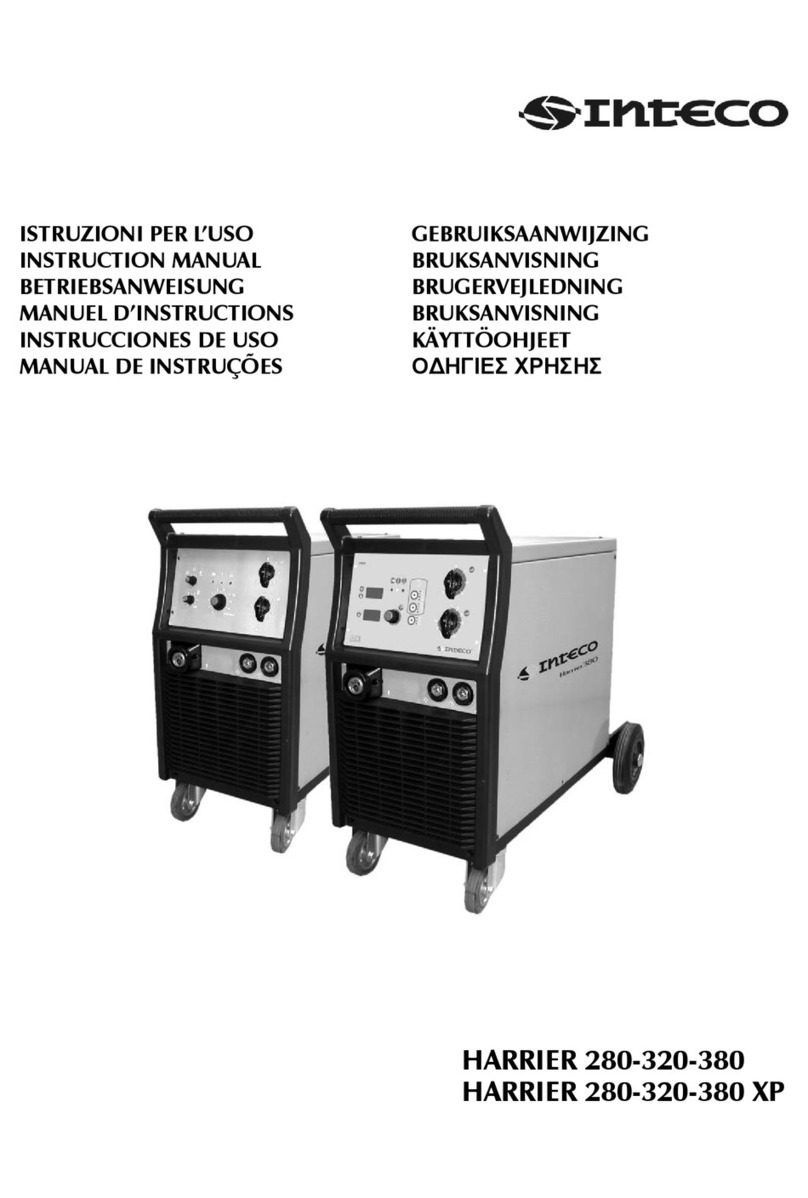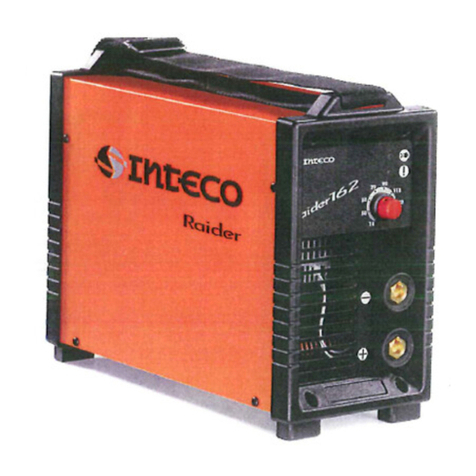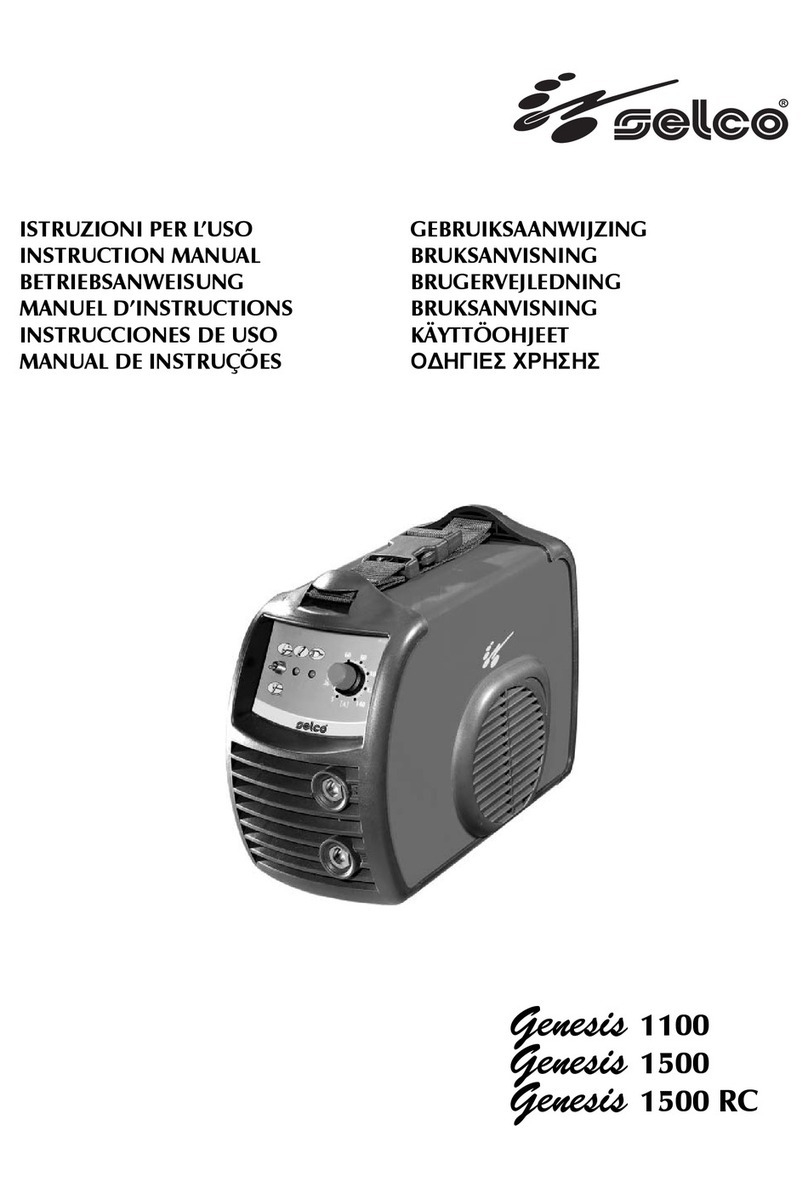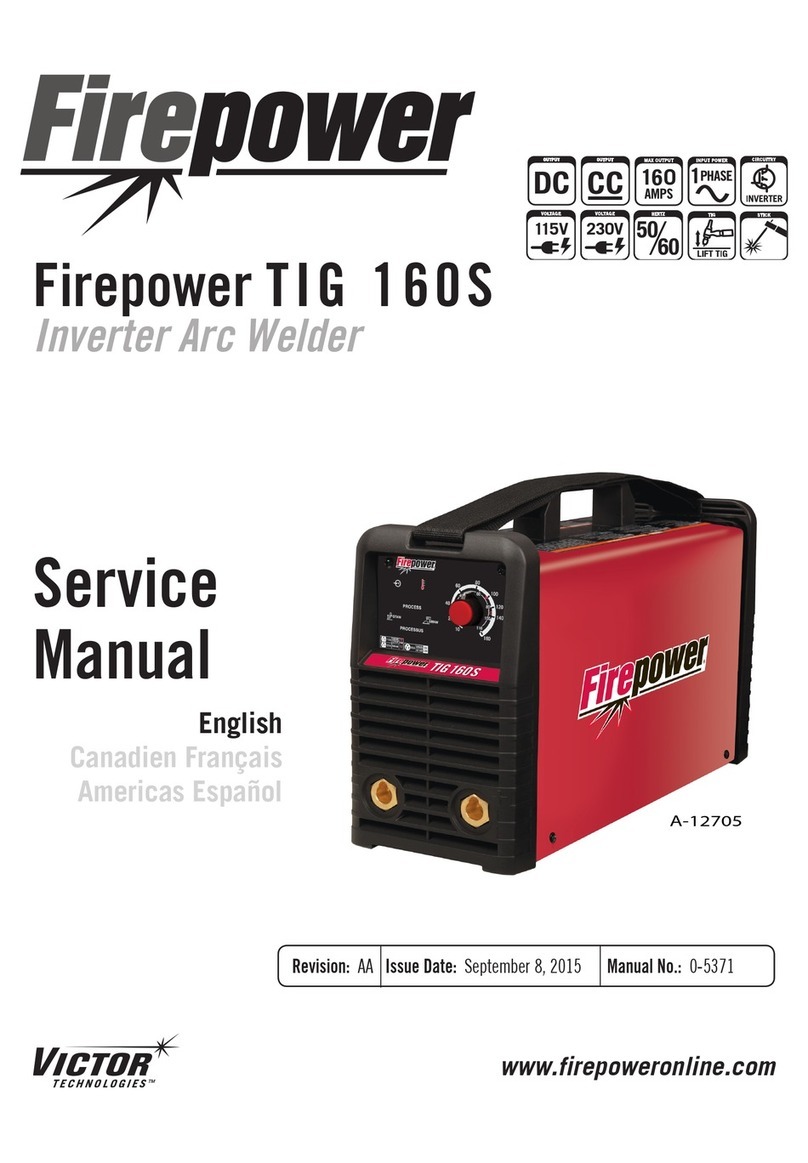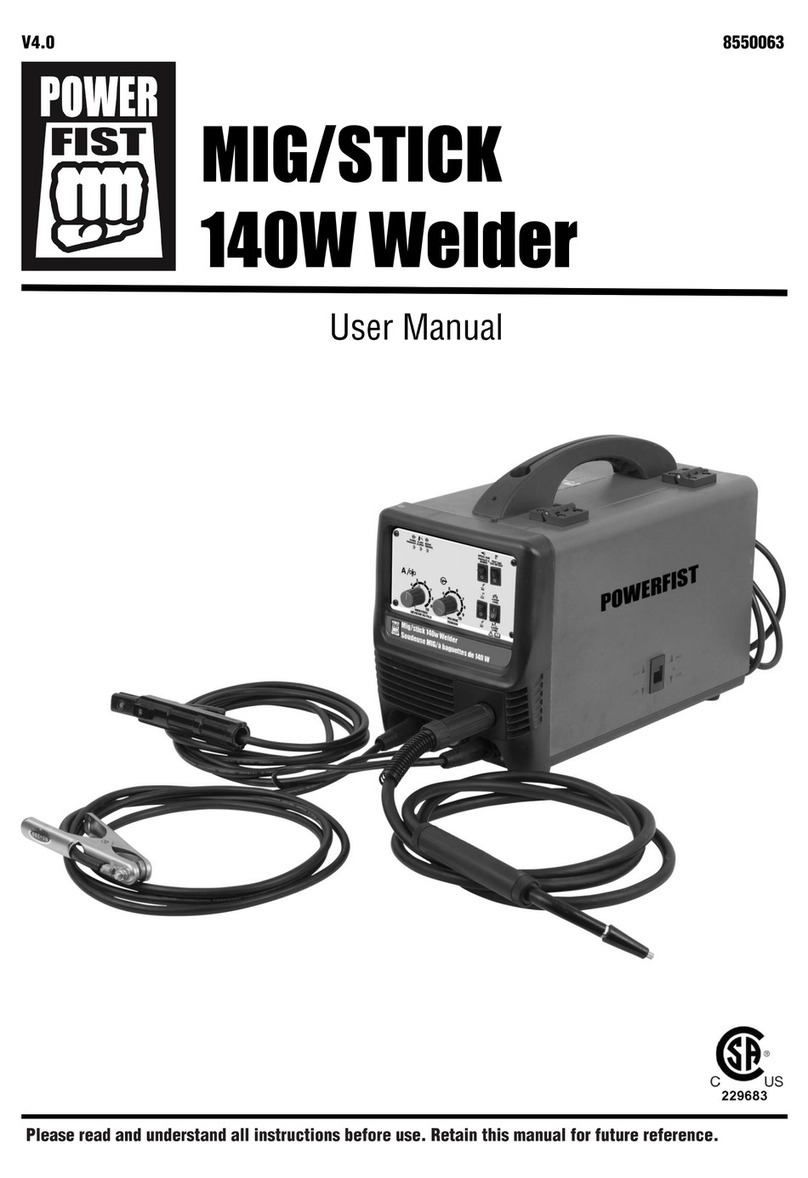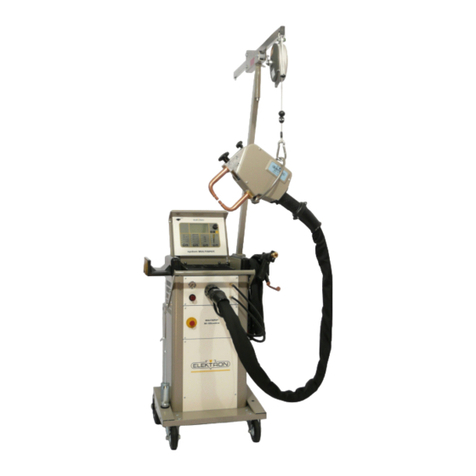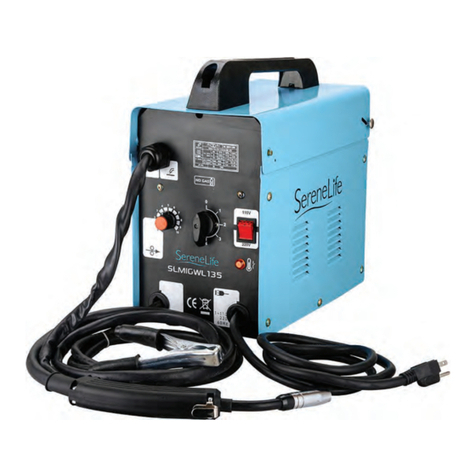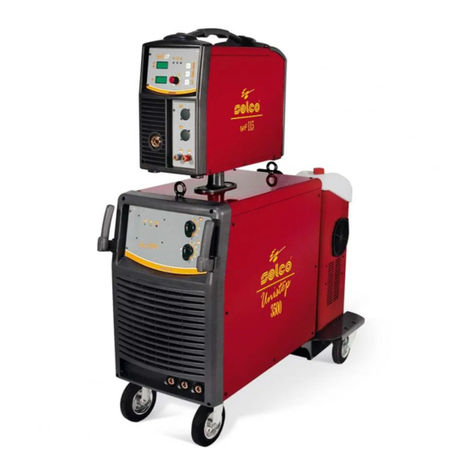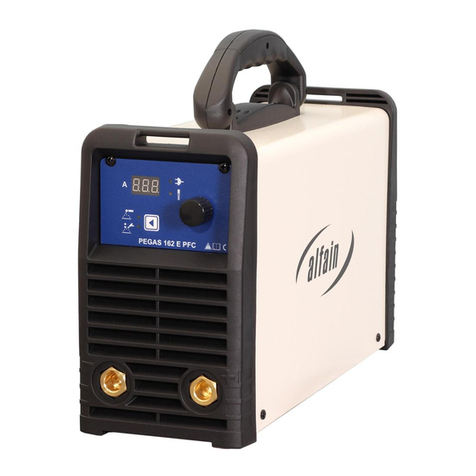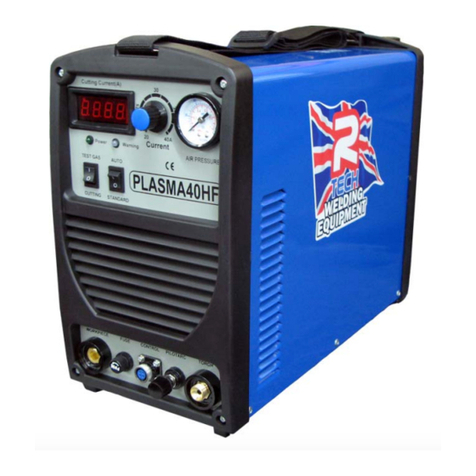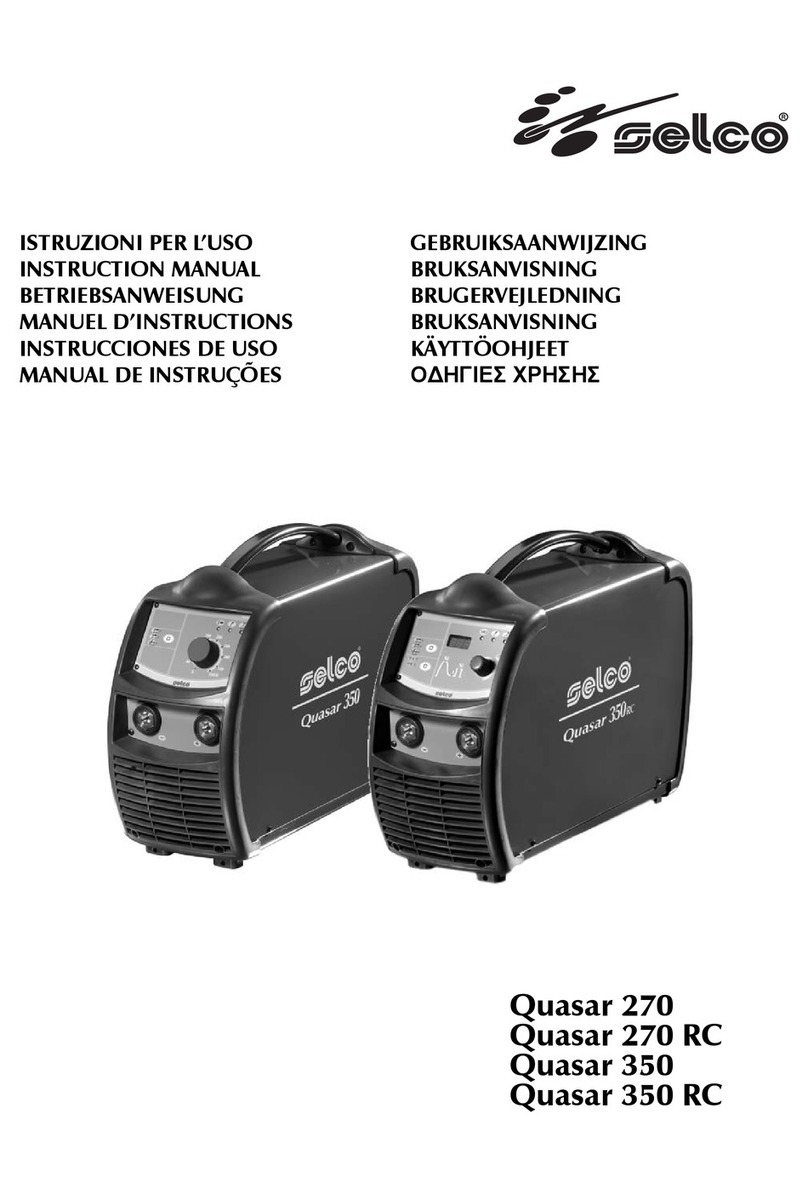Inteco Eagle 242 User manual

Eagle 242
ISTRUZIONI PER L’USO
INSTRUCTION MANUAL
BETRIEBSANWEISUNG
MANUEL D’INSTRUCTIONS
INSTRUCCIONES DE USO
MANUAL DE INSTRUÇÕES
GEBRUIKSAANWIJZING
BRUKSANVISNING
BRUGERVEJLEDNING
BRUKSANVISNING
KÄYTTÖOHJEET

Cod. 91.08.088
Data 25/01/06
Rev.
ITALIANO . . . . . . . . . . . . . . . . . . . . . . . . . . . . . . . . . . . . . . . . . . . . . . . . . . . . . . . . . . . . . . . . . . . . . . . . . . . . . . . . . . . . . . . . . . . . .3
ENGLISH . . . . . . . . . . . . . . . . . . . . . . . . . . . . . . . . . . . . . . . . . . . . . . . . . . . . . . . . . . . . . . . . . . . . . . . . . . . . . . . . . . . . . . . . . . . .11
DEUTSCH . . . . . . . . . . . . . . . . . . . . . . . . . . . . . . . . . . . . . . . . . . . . . . . . . . . . . . . . . . . . . . . . . . . . . . . . . . . . . . . . . . . . . . . . . . . .19
FRANÇAIS . . . . . . . . . . . . . . . . . . . . . . . . . . . . . . . . . . . . . . . . . . . . . . . . . . . . . . . . . . . . . . . . . . . . . . . . . . . . . . . . . . . . . . . . . . . .27
ESPAÑOL . . . . . . . . . . . . . . . . . . . . . . . . . . . . . . . . . . . . . . . . . . . . . . . . . . . . . . . . . . . . . . . . . . . . . . . . . . . . . . . . . . . . . . . . . . . .35
PORTUGUÊS . . . . . . . . . . . . . . . . . . . . . . . . . . . . . . . . . . . . . . . . . . . . . . . . . . . . . . . . . . . . . . . . . . . . . . . . . . . . . . . . . . . . . . . . .43
NEDERLANDS . . . . . . . . . . . . . . . . . . . . . . . . . . . . . . . . . . . . . . . . . . . . . . . . . . . . . . . . . . . . . . . . . . . . . . . . . . . . . . . . . . . . . . . . .51
SVENSKA . . . . . . . . . . . . . . . . . . . . . . . . . . . . . . . . . . . . . . . . . . . . . . . . . . . . . . . . . . . . . . . . . . . . . . . . . . . . . . . . . . . . . . . . . . . .59
DANSK . . . . . . . . . . . . . . . . . . . . . . . . . . . . . . . . . . . . . . . . . . . . . . . . . . . . . . . . . . . . . . . . . . . . . . . . . . . . . . . . . . . . . . . . . . . . . .67
NORSK . . . . . . . . . . . . . . . . . . . . . . . . . . . . . . . . . . . . . . . . . . . . . . . . . . . . . . . . . . . . . . . . . . . . . . . . . . . . . . . . . . . . . . . . . . . . . .75
SUOMI . . . . . . . . . . . . . . . . . . . . . . . . . . . . . . . . . . . . . . . . . . . . . . . . . . . . . . . . . . . . . . . . . . . . . . . . . . . . . . . . . . . . . . . . . . . . . .83
. . . . . . . . . . . . . . . . . . . . . . . . . . . . . . . . . . . . . . . . . . . . . . . . . . . . . . . . . . . . . . . . . . . . . . . . . . . . . . . . . . . . . . . . .91
Targa dati, Nominal data, Leistungschilder, Plaque donées, Placa de características, Placa de dados, Technische gegevens,
Märkplåt, Dataskilt, Identifikasjonsplate, Arvokilpi, . . . . . . . . . . . . . . . . . . . . . . . . . . . . . . . . . . . . . . 99
Significato targa dati del generatore, Meaning of power source rating plate, Bedeutung der Angaben auf dem Leistungsschild des
Generators, Signification de la plaque des données du générateur, Significado de la etiqueta de los datos del generador,
Significado da placa de dados do gerador, Betekenis gegevensplaatje van de generator, Generatorns märkplåt, Betydning af
dataskiltet for strømkilden, Beskrivelse av generatorns informasjonsskilt, Generaattorin kilven sisältö,
. . . . . . . . . . . . . . . . . . . . . . . . . . . . . . . . . . . . . . . . . . . . . . . . . . . . . . . . . . .100
Schema, Diagram, Schaltplan, Schéma, Esquema, Diagrama, Schema, kopplingsschema, Oversigt, Skjema, Kytkentäkaavio,
. . . . . . . . . . . . . . . . . . . . . . . . . . . . . . . . . . . . . . . . . . . . . . . . . . . . . . . . . . . . . . . . . . . . . . . . . . . . . . . . . . . . . . . .101
Connettori, Connectors, Verbinderer, Connecteurs, Conectors, Conectores, Connectoren, Kontaktdon, Konnektorer,
Skjøtemunstykken, Liittimet, . . . . . . . . . . . . . . . . . . . . . . . . . . . . . . . . . . . . . . . . . . . . . . . . . . . . . . . . . . . . . . . . . . .102
Lista ricambi, Spare parts list, Ersatzteilverzeichnis, Liste de pièces détachées, Lista de repuestos, Lista de peças de reposição,
Reserveonderdelenlijst, Reservdelslista, Liste med reservedele, Liste over reservedeler, Varaosaluettelo,
. . . . . . . . . . . . . . . . . . . . . . . . . . . . . . . . . . . . . . . . . . . . . . . . . . . . . . . . . . . . . . . . . . . . . . . . . .104-105
Legenda simboli, Key to symbols, Legende der Symbole, Legende des Symboles, Leyenda de los símbolos, Legenda dos símbolos,
Legenda symbolen, Teckenförklaring , Symbolforklaring, Symbolbeskrivelse, Luettelo symboleista,
. . . . . .106

3
ITALIANO
MANUALE USO E MANUTENZIONE
Questo manuale è parte integrante della unità o macchina e deve accompagnarla in ogni suo spostamento o rivendita.
È cura dell’utilizzatore mantenerlo integro ed in buone condizioni. La INTECO - Division of SELCO s.r.l. si riserva il diritto di appor-
tare modifiche in qualsiasi momento e senza alcun preavviso.
I diritti di traduzione, di riproduzione e di adattamento, totale o parziale e con qualsiasi mezzo (compresi le copie fotostatiche, i
film ed i microfilm) sono riservati e vietati senza l’autorizzazione scritta della INTECO - Division of SELCO s.r.l.
Quanto esposto è di vitale importanza e pertanto necessario affinchè le garanzie possano operare. Nel caso l’operatore non
si attenesse a quanto descritto, il costruttore declina ogni responsabilità.
DICHIARAZIONE DI CONFORMITA’ CE
La ditta
INTECO - Division of SELCO s.r.l. - Via Palladio, 19 - 35010 ONARA DI TOMBOLO (Padova) - ITALY
dichiara che l'apparecchio tipo EAGLE 242
è conforme alle direttive: 73/23/CEE
89/336 CEE
92/31 CEE
93/68 CEE
e che sono state applicate le norme: EN 60974-1
EN 60974-10
Ogni intervento o modifica non autorizzati dalla INTECO - Division of SELCO s.r.l. faranno decadere la validità di questa dichiara-
zione.
Onara di Tombolo (PADOVA) Rappresentante legale
Lino Frasson
SIMBOLOGIA
Pericoli imminenti che causano gravi lesioni e comportamenti rischiosi che potrebbero causare gravi lesioni.
Comportamenti che potrebbero causare lesioni non gravi o danni alle cose.
Le note precedute da questo simbolo sono di carattere tecnico e facilitano le operazioni.

4
INDICE
1 AVVERTENZE . . . . . . . . . . . . . . . . . . . . . . . . . . . . . . . . . . . . . . . . . . . . . . . . . . . . . . . . . . . . . . . . . . . . . . . . . . .5
1.1 Protezione personale e di terzi . . . . . . . . . . . . . . . . . . . . . . . . . . . . . . . . . . . . . . . . . . . . . . . . . . . . . . .5
1.1.1 Protezione personale . . . . . . . . . . . . . . . . . . . . . . . . . . . . . . . . . . . . . . . . . . . . . . . . . . . . . . . . . . . . .5
1.1.2 Protezione di terzi . . . . . . . . . . . . . . . . . . . . . . . . . . . . . . . . . . . . . . . . . . . . . . . . . . . . . . . . . . . . . . .5
1.2 Protezione da fumi e gas . . . . . . . . . . . . . . . . . . . . . . . . . . . . . . . . . . . . . . . . . . . . . . . . . . . . . . . . . . . .5
1.3 Prevenzione incendio/scoppio . . . . . . . . . . . . . . . . . . . . . . . . . . . . . . . . . . . . . . . . . . . . . . . . . . . . . . . .5
1.4 Compatibilità elettromagnetica (EMC) . . . . . . . . . . . . . . . . . . . . . . . . . . . . . . . . . . . . . . . . . . . . . . . . . .5
1.4.1 Installazione, uso e valutazione dell’area . . . . . . . . . . . . . . . . . . . . . . . . . . . . . . . . . . . . . . . . . . . . . . .5
1.4.2 Metodi di riduzione delle emissioni . . . . . . . . . . . . . . . . . . . . . . . . . . . . . . . . . . . . . . . . . . . . . . . . . .5
1.5 Grado di protezione IP . . . . . . . . . . . . . . . . . . . . . . . . . . . . . . . . . . . . . . . . . . . . . . . . . . . . . . . . . . . . .6
2 INSTALLAZIONE . . . . . . . . . . . . . . . . . . . . . . . . . . . . . . . . . . . . . . . . . . . . . . . . . . . . . . . . . . . . . . . . . . . . . . . .6
2.1 Modalità di sollevamento, trasporto e scarico . . . . . . . . . . . . . . . . . . . . . . . . . . . . . . . . . . . . . . . . . . . . .6
2.2 Posizionamento generatore . . . . . . . . . . . . . . . . . . . . . . . . . . . . . . . . . . . . . . . . . . . . . . . . . . . . . . . . . .6
2.3 Posizionamento bombole . . . . . . . . . . . . . . . . . . . . . . . . . . . . . . . . . . . . . . . . . . . . . . . . . . . . . . . . . . .6
2.4 Installazione apparecchiatura . . . . . . . . . . . . . . . . . . . . . . . . . . . . . . . . . . . . . . . . . . . . . . . . . . . . . . . .6
2.5 Allacciamento . . . . . . . . . . . . . . . . . . . . . . . . . . . . . . . . . . . . . . . . . . . . . . . . . . . . . . . . . . . . . . . . . . .6
2.5.1 Allacciamento elettrico alla rete . . . . . . . . . . . . . . . . . . . . . . . . . . . . . . . . . . . . . . . . . . . . . . . . . . . . .6
2.5.2 Messa a terra . . . . . . . . . . . . . . . . . . . . . . . . . . . . . . . . . . . . . . . . . . . . . . . . . . . . . . . . . . . . . . . . . . .6
2.5.3 Possibili inconvenienti elettrici . . . . . . . . . . . . . . . . . . . . . . . . . . . . . . . . . . . . . . . . . . . . . . . . . . . . . .7
2.6 Messa in servizio . . . . . . . . . . . . . . . . . . . . . . . . . . . . . . . . . . . . . . . . . . . . . . . . . . . . . . . . . . . . . . . . .7
2.6.1 Messa in opera . . . . . . . . . . . . . . . . . . . . . . . . . . . . . . . . . . . . . . . . . . . . . . . . . . . . . . . . . . . . . . . . .7
2.6.2 Possibili difetti di saldatura in MMA . . . . . . . . . . . . . . . . . . . . . . . . . . . . . . . . . . . . . . . . . . . . . . . . . .7
2.6.3 Possibili difetti di saldatura in TIG . . . . . . . . . . . . . . . . . . . . . . . . . . . . . . . . . . . . . . . . . . . . . . . . . . . .8
2.7 Manutenzione della saldatrice . . . . . . . . . . . . . . . . . . . . . . . . . . . . . . . . . . . . . . . . . . . . . . . . . . . . . . . .8
3 PRESENTAZIONE DELLA SALDATRICE . . . . . . . . . . . . . . . . . . . . . . . . . . . . . . . . . . . . . . . . . . . . . . . . . . . . . . . .8
3.1 Generalità . . . . . . . . . . . . . . . . . . . . . . . . . . . . . . . . . . . . . . . . . . . . . . . . . . . . . . . . . . . . . . . . . . . . . .8
3.2 Pannello comandi frontale . . . . . . . . . . . . . . . . . . . . . . . . . . . . . . . . . . . . . . . . . . . . . . . . . . . . . . . . . . .8
3.3 Pannello posteriore . . . . . . . . . . . . . . . . . . . . . . . . . . . . . . . . . . . . . . . . . . . . . . . . . . . . . . . . . . . . . . . .9
3.4 Pannello prese . . . . . . . . . . . . . . . . . . . . . . . . . . . . . . . . . . . . . . . . . . . . . . . . . . . . . . . . . . . . . . . . . . .9
4 CENNI TEORICI SULLA SALDATURA MMA . . . . . . . . . . . . . . . . . . . . . . . . . . . . . . . . . . . . . . . . . . . . . . . . . . . .9
4.1 Saldatura con elettrodo rivestito . . . . . . . . . . . . . . . . . . . . . . . . . . . . . . . . . . . . . . . . . . . . . . . . . . . . . .9
5 SALDATURA TIG (ARCO CONTINUO) . . . . . . . . . . . . . . . . . . . . . . . . . . . . . . . . . . . . . . . . . . . . . . . . . . . . . . .10
5.1 Introduzione . . . . . . . . . . . . . . . . . . . . . . . . . . . . . . . . . . . . . . . . . . . . . . . . . . . . . . . . . . . . . . . . . . .10
5.1.1 Saldatura TIG degli acciai . . . . . . . . . . . . . . . . . . . . . . . . . . . . . . . . . . . . . . . . . . . . . . . . . . . . . . . . .10
5.1.2 Saldatura TIG del rame . . . . . . . . . . . . . . . . . . . . . . . . . . . . . . . . . . . . . . . . . . . . . . . . . . . . . . . . . .10
6 CARATTERISTICHE TECNICHE . . . . . . . . . . . . . . . . . . . . . . . . . . . . . . . . . . . . . . . . . . . . . . . . . . . . . . . . . . . .10

5
1 AVVERTENZE
Prima di iniziare qualsiasi operazione siate sicuri di
aver ben letto e compreso questo manuale.
Non apportate modifiche e non eseguite manutenzioni
non descritte. Per ogni dubbio o problema circa l’utiliz-
zo della macchina, anche se qui non descritto, consultare persona-
le qualificato.
Il produttore non si fa carico di danni a persone o cose, occor-
si per incuria nella lettura o nella messa in pratica di quanto
scritto in questo manuale.
1.1 Protezione personale e di terzi
Il processo di saldatura è fonte nociva di radiazioni, rumore,
calore ed esalazioni gassose. I portatori di apparecchiature elet-
troniche vitali (pace-maker) devono consultare il medico prima
di avvicinarsi alle operazioni di saldatura ad arco o di taglio al
plasma. In caso di evento dannoso, in assenza di quanto sopra,
il costruttore non risponderà dei danni patiti.
1.1.1 Protezione personale
- Non utilizzare lenti a contatto!!!
- Provvedere ad un’attrezzatura di pronto soccorso.
- Non sottovalutare scottature o ferite.
- Indossare indumenti di protezione per proteggere la pelle dai
raggi dell’arco e dalle scintille o dal metallo incandescente, ed
un casco oppure un berretto da saldatore.
- Utilizzare maschere con protezioni laterali per il viso e filtro di
protezione idoneo (almeno NR10 o maggiore) per gli occhi.
- Utilizzare cuffie antirumore se il processo di saldatura diviene
fonte di rumorosità pericolosa.
Indossare sempre occhiali di sicurezza con schermi laterali
specialmente nell’operazione manuale o meccanica di rimo-
zione delle scorie di saldatura.
Interrompere immediatamente le operazioni di saldatura se si
avverte la sensazione di scossa elettrica.
1.1.2 Protezione di terzi
- Sistemare una parete divisoria ignifuga per proteggere la zona
di saldatura da raggi, scintille e scorie incandescenti.
- Avvertire le eventuali terze persone di non fissare con lo
sguardo la saldatura e di proteggersi dai raggi dell’arco o del
metallo incandescente.
- Se il livello di rumorosità supera i limiti di legge, delimitare la
zona di lavoro ed accertarsi che le persone che vi accedono
siano protette con cuffie o auricolari.
1.2 Protezione da fumi e gas
Fumi, gas e polveri prodotti dal processo di saldatura possono
risultare dannosi alla salute.
- Non usare ossigeno per la ventilazione.
- Prevedere una ventilazione adeguata, naturale o forzata, nella
zona di lavoro.
- Nel caso di saldature in ambienti angusti è consigliata la sor-
veglianza dell’operatore da parte di un collega situato ester-
namente.
- Posizionare le bombole di gas in spazi aperti o con un buon
ricircolo d’aria.
- Non eseguire operazioni di saldatura nei pressi di luoghi di
sgrassaggio o verniciatura.
1.3 Prevenzione incendio/scoppio
Il processo di saldatura può essere causa di incendio e/o scoppio.
- Sgomberare dalla zona di lavoro e circostante i materiali o gli
oggetti infiammabili o combustibili.
- Predisporre nelle vicinanze della zona di lavoro un’ attrezza-
tura o un dispositivo antincendio.
- Non eseguire operazioni di saldatura o taglio su recipienti o
tubi chiusi.
- Nel caso si siano aperti, svuotati e puliti accuratamente i reci-
pienti o tubi in questione, l’operazione di saldatura dovrà
essere fatta comunque con molta cautela.
- Non saldare in atmosfera contenente polveri, gas o vapori
esplosivi.
- Non eseguire saldature sopra o in prossimità di recipienti in
pressione.
- Non utilizzare tale apparecchiatura per scongelare tubi.
1.4 Compatibilità elettromagnetica (EMC)
Questo apparecchio è costruito in conformità alle indicazioni
contenute nella norma armonizzata EN60974-10 a cui si riman-
da l’utilizzatore di questa apparecchiatura.
- Installare ed utilizzare l’impianto seguendo le indicazioni di
questo manuale.
- Questo apparecchio deve essere usato solo a scopo profes-
sionale in un ambiente industriale. Si deve considerare che vi
possono essere potenziali difficoltà nell’assicurare la compati-
bilità elettromagnetica in un ambiente diverso da quello indu-
striale.
1.4.1 Installazione, uso e valutazione dell’area
- L’utilizzatore deve essere un esperto del settore ed in quanto
tale è responsabile dell’installazione e dell’uso dell’apparec-
chio secondo le indicazioni del costruttore. Qualora vengano
rilevati dei disturbi elettromagnetici, spetta all’utilizzatore del-
l’apparecchio risolvere la situazione avvalendosi dell’assisten-
za tecnica del costruttore.
- In tutti i casi i disturbi elettromagnetici devono essere ridotti
fino al punto in cui non costituiscono più un fastidio.
- Prima di installare questo apparecchio, l’utilizzatore deve
valutare i potenziali problemi elettromagnetici che si potreb-
bero verificare nell’area circostante e in particolare la salute
delle persone circostanti, per esempio: utilizzatori di pace-
maker e di apparecchi acustici.
1.4.2 Metodi di riduzione delle emissioni
ALIMENTAZIONE DI RETE
- La saldatrice deve essere collegata all’ alimentazione di
rete secondo le istruzioni del costruttore.
In caso di interferenza potrebbe essere necessario prendere
ulteriori precauzioni quali il filtraggio dell’alimentazione di rete.
Si deve inoltre considerare la possibilità di schermare il cavo
d’alimentazione.
CAVI DI SALDATURA E TAGLIO
I cavi di saldatura devono essere tenuti più corti possibile e
devono essere posizionati vicini e scorrere su o vicino il livello
del suolo.
COLLEGAMENTO EQUIPOTENZIALE
Il collegamento a massa di tutti i componenti metallici nell’ im-
pianto di saldatura e nelle sue vicinanze deve essere preso in
considerazione.
Tuttavia, i componenti metallici collegati al pezzo in lavorazio-
ne andranno ad aumentare il rischio per l’operatore di subire
uno choc toccando questi componenti metallici e l’elettrodo
contemporaneamente.
L’operatore deve perciò essere isolato da tutti questi com-
ponenti metallici collegati a massa.
Rispettare le normative nazionali riguardanti il collegamento
equipotenziale.

MESSA A TERRA DEL PEZZO IN LAVORAZIONE
Dove il pezzo in lavorazione non è collegato a terra, per motivi
di sicurezza elettrica o a causa della dimensione e posizione, un
collegamento a massa tra il pezzo e la terra potrebbe ridurre le
emissioni.
Bisogna prestare attenzione affinché la messa a terra del pezzo
in lavorazione non aumenti il rischio di infortunio degli utilizza-
tori o danneggi altri apparecchi elettrici.
Rispettare le normative nazionali riguardanti la messa a terra.
SCHERMATURA
La schermatura selettiva di altri cavi e apparecchi presenti nell’
area circostante può alleviare i problemi di interferenza.
La schermatura dell’intero impianto di saldatura può essere
presa in considerazione per applicazioni speciali.
1.5 Grado di protezione IP
Grado di protezione dell’involucro in conformità alla EN 60529:
IP23S
- Involucro protetto contro l'accesso a parti pericolose con un
dito e contro corpi solidi estranei di diametro maggiore/ ugua-
le a 12,5 mm.
- Involucro protetto contro pioggia a 60° sulla verticale.
- Involucro protetto dagli effetti dannosi dovuti all’ingresso d’acqua,
quando le parti mobili dell’apparecchiatura non sono in moto.
2 INSTALLAZIONE
2.1 Modalità di sollevamento, trasporto e scarico
Non sottovalutare il peso dell'impianto, vedi
caratteristiche tecniche.
Non far transitare o sostare il carico sospeso
sopra a persone o cose.
Non lasciare cadere o appoggiare con forza l'im-
pianto o la singola unità.
E’ vietato utilizzare la maniglia ai fini del solleva-
mento.
Il generatore è fornito di una cinghia allungabile che ne per-
mette la movimentazione sia a mano che a spalla.
Non attemperando puntualmente ed inderogabilmente a quan-
to sopra descritto, il produttore declina ogni responsabilità.
2.2 Posizionamento generatore
Osservare le seguenti norme:
- Facile accesso ai comandi ed ai collegamenti.
- Non posizionare l’attrezzatura in ambienti angusti.
- Non posizionare mai il generatore su di un piano con inclina-
zione maggiore di 10° dal piano orizzontale.
2.3 Posizionamento bombole
- Le bombole di gas compresso sono pericolose; consultare il
fornitore prima di manipolarle.
Sistemarle al riparo da:
- esposizione diretta a raggi solari;
- fiamme;
- sbalzi di temperatura;
- temperature molto rigide.
Vincolarle con mezzi idonei a pareti od altro per evitarne la
caduta.
2.4 Installazione apparecchiatura
- Rispettare le disposizioni locali sulle norme di sicurezza nel-
l’installazione ed eseguire la manutenzione dell’ apparecchia-
tura secondo le disposizioni del costruttore.
- L’eventuale manutenzione deve essere eseguita esclusiva-
mente da personale qualificato.
- E’ vietata la connessione (in serie o parallelo) dei generatori.
- Disinserire la linea di alimentazione dall’impianto prima di
intervenire all’interno del generatore.
- Eseguire la manutenzione periodica dell’impianto.
- Accertarsi che rete di alimentazione e messa a terra siano suf-
ficienti e adeguate.
- Il cavo di massa va collegato il più vicino possibile alla zona
da saldare.
- Prima di saldare controllare lo stato dei cavi elettrici e della
torcia, se danneggiati non effettuare la saldatura prima della
eventuale riparazione o sostituzione.
- Non salire o appoggiarsi al materiale da saldare.
- Si raccomanda che l’operatore non tocchi contemporanea-
mente due torce o due pinze portaelettrodo.
- Proteggere l’impianto contro la pioggia battente e contro il
sole.
2.5 Allacciamento
2.5.1 Allacciamento elettrico alla rete
L'impianto è dotato di un unico allacciamento elettrico con cavo
di 5m posto nella parte posteriore del generatore.
Tabella dimensionamento del cavi e dei fusibili in ingresso al
generatore:
Tensione nominale 400 V ± 10%
Range di tensione 360 - 440 V
Fusibili ritardati 16 A 500 V
Cavo alimentazione 4x2,5 mm2
2.5.2 Messa a terra
Per la protezione degli utenti, l’impianto deve essere corretta-
mente collegato a terra. Il cavo di alimentazione è provvisto di
un conduttore (giallo - verde) per la messa a terra, che deve
essere collegato ad una spina dotata di contatto a terra.
6

ATTENZIONE
* L'impianto elettrico deve essere realizzato da personale
tecnico in possesso di requisiti tecnico-professionali spe-
cifici e in conformità alle leggi dello stato in cui si effettua
l'installazione.
* Il cavo rete della saldatrice è fornito di un filo giallo/verde,
che deve essere collegato SEMPRE al conduttore di prote-
zione a terra. Questo filo giallo/verde non deve MAI es-
sere usato insieme ad altro filo per prelievi di tensione.
* Controllare l'esistenza della "messa a terra" nell'impianto
utilizzato ed il buono stato della presa di corrente.
* Montare solo spine omologate secondo le normative di
sicurezza.
2.5.3 Possibili inconvenienti elettrici
Per ogni dubbio e/o problema non esitare a consultare il più
vicino centro di assistenza tecnica.
2.6 Messa in servizio
2.6.1 Messa in opera
Per la messa in opera dell’impianto si osservino le seguenti indi-
cazioni:
a) Collocare il generatore in un luogo asciutto, pulito e con ven-
tilazione appropriata.
Collegamento per saldatura MMA (Fig.1)
Il collegamento in figura dà come risultato una sal-
datura con polarità inversa. Per ottenere una salda-
tura con polarità diretta, invertire il collegamento.
Fig.1
Collegamento per saldatura TIG (Fig.2)
- Collegare separatamente il connettore del tubo del gas della
torcia alla distribuzione del gas stesso.
La regolazione del flusso del gas di protezione si
attua agendo su un rubinetto generalmente posto
sulla torcia.
Fig.2
Nel caso si verifichi qualche inconveniente durante le fasi
sopra descritte controllare i led di visualizzazione ed even-
tualmente consultare il capitolo “Possibili inconvenienti”.
2.6.2 Possibili difetti di saldatura in MMA
7
Difetto
Mancata accensione
della macchina
(Led verde spento)
Erogazione di potenza non
corretta. (Led verde acceso)
Assenza di corrente in uscita.
(Led verde acceso)
(Led giallo acceso)
Causa
- Tensione non presente
sulla presa di alimenta-
zione.
- Spina o cavo di alimenta-
zione difettoso.
- Fusibile interno bruciato.
- Commutatore MMA/TIG
in posizione scorretta
o difettoso.
- Potenziometro regolazione
di corrente difettoso.
- Apparecchio surriscaldato.
Attendere raffreddamento
con saldatrice accesa.
- Tensione rete fuori range.
Problema
Spruzzi eccessivi
Crateri
Inclusioni
Insufficiente penetrazione
Incollature
Soffiature e porosità
Cricche
Causa
- Arco lungo.
- Corrente elevata.
- Allontanamento rapido
dell'elettrodo in staccata.
- Cattiva pulizia o distribu-
zione delle passate.
- Movimento difettoso del-
l'elettrodo.
- Velocità di avanzamento
elevata.
- Corrente di saldatura
troppo bassa.
- Cianfrino stretto.
- Mancata scalpellatura al
vertice.
- Arco troppo corto.
- Corrente troppo bassa.
- Umidità nell'elettrodo.
- Arco lungo.
- Correnti troppo elevate.
- Materiali sporchi.
- Idrogeno in saldatura
(presente sul rivestimento
dell'elettrodo).

2.6.3 Possibili difetti di saldatura in TIG
2.7 Manutenzione della saldatrice
La saldatrice deve essere sottoposta ad una manutenzione ordi-
naria secondo le indicazioni del costruttore.
Tutti gli sportelli di accesso e servizio e i coperchi devono esse-
re chiusi e ben fissati quando l’apparecchio è in funzione.
La saldatrice non deve essere sottoposta ad alcun tipo di modifica.
Evitare che si accumuli polvere metallica in prossimità e sulle
alette di areazione.
Togliere l'alimentazione all'impianto prima di
ogni intervento!
Controlli periodici al generatore:
* Effettuare la pulizia interna utilizzando aria com-
pressa a bassa pressione e pennelli a setola mor-
bida.
* Controllare le connessioni elettriche e tutti i cavi
di collegamento.
Per la manutenzione e l'uso dei riduttori di pres-
sione consultare i manuali specifici.
Per la manutenzione o la sostituzione dei compo-
nenti delle torce TIG/MIG, della pinza portaelet-
trodo e/o del cavo massa:
* Controllare la temperatura dei componenti ed accertarsi
che non siano surriscaldati.
* Utilizzare sempre guanti a normativa.
* Utilizzare chiavi ed attrezzi adeguati.
In mancanza di detta manutenzione, decadranno tutte le
garanzie e comunque il costruttore viene sollevato da qual-
siasi responsabilità.
3 PRESENTAZIONE DELLA SALDATRICE
3.1 Generalità
Questi generatori ad inverter a corrente costante sono in grado
di eseguire in modo eccellente i procedimenti di saldatura:
- MMA,
- TIG (con riduzione della corrente in corto circuito).
Nelle saldatrici ad inverter la corrente di uscita è insensibile alle
variazioni della tensione di alimentazione e della lunghezza del-
l'arco ed è perfettamente livellata fornendo la migliore qualità
nella saldatura.
Sul generatore sono previsti:
- una presa positivo (+) e una presa negativo (-),
- un pannello frontale,
- un pannello comandi posteriore.
3.2 Pannello comandi frontale
Fig.3
L1: si illumina non appena il generatore viene alimen-
tato.
L2: indica l’eventuale intervento dei dispositivi di pro-
tezione quali la protezione termica.
S1: tasto selezione saldatura.
Permette la selezione del procedimento di saldatura.
L’accensione del led conferma la selezione.
Saldatura ad elettrodo (MMA)
Saldatura TIG
P1: potenziometro di impostazione corrente di saldatura.
Permette di regolare con continuità la corrente di saldatura sia
in TIG che in MMA. Tale corrente resta invariata durante la sal-
datura quando le condizioni di alimentazione e di saldatura
variano dentro i range dichiarati nelle caratteristiche tecniche.
In MMA la presenza di HOT-START ed ARC-FORCE fa si che la
corrente media in uscita possa essere più elevata di quella
impostata.
P2: potenziometro di impostazione dell' Arc-Force.
E' abilitato solo in saldatura MMA. Come indicato dalla
scala graduata, regola il valore della corrente di ARC-FORCE
(cioè la percentuale della corrente di saldatura che si somma a
questa quando la goccia fusa che si stacca dall'elettrodo corto-
circuita il bagno di fusione con l'elettrodo stesso, in ogni caso, la
corrente massima totale ottenibile è di circa 260A) dallo 0% al
100% della corrente di saldatura.
8
Problema
Ossidazioni
Inclusioni di tungsteno
Porosità
Cricche
Causa
- Gas insufficiente.
- Mancata protezione a
rovescio.
- Affilatura scorretta dell'
elettrodo.
- Elettrodo troppo piccolo.
- Difetto operativo(contatto
della punta con il pezzo).
- Sporcizia sui lembi.
- Sporcizia sul materiale
d'apporto.
- Velocità di avanzamento
elevata.
- Intensità di corrente
troppo bassa.
- Materiale d'apporto
inadeguato.
- Apporto termico elevato.
- Materiali sporchi.

3.3 Pannello posteriore
Fig.4
I1: interruttore di accensione.
Comanda l'accensione elettrica della saldatrice.
Ha due posizioni "O" spento; "I" acceso.
1: cavo di alimentazione.
3.4 Pannello prese
Fig.5
P1: presa negativa di potenza.
Permette la connessione del cavo di massa in elettrodo
o della torcia in TIG.
P2: presa positiva di potenza.
Permette la connessione della torcia elettrodo in MMA
o del cavo di massa in TIG.
4 CENNI TEORICI SULLA SALDATURA MMA
4.1 Saldatura con elettrodo rivestito
Preparazione dei lembi
Per ottenere buone saldature è sempre consigliabile operare su
parti pulite, libere da ossido, ruggine o altri agenti contaminanti.
Scelta dell'elettrodo
Il diametro dell'elettrodo da impiegare dipende dallo spessore
del materiale, dalla posizione, dal tipo di giunto e dal tipo di
cianfrino.
Elettrodi di grosso diametro richiedono correnti elevate con
conseguente elevato apporto termico nella saldatura.
Tipo di rivestimento Proprietà Impiego
Rutilo Facilità d'impiego Tutte le posizioni
Acido Alta velocità fusione Piano
Basico Caratt. meccaniche Tutte le posizioni
Scelta della corrente di saldatura
Il range della corrente di saldatura relativa al tipo di elettrodo
impiegato viene specificato dal costruttore sul contenitore stes-
so degli elettrodi.
Accensione e mantenimento dell'arco
L'arco elettrico si stabilisce sfregando la punta dell' elettrodo sul
pezzo da saldare collegato al cavo massa e, una volta scoccato
l'arco, ritraendo rapidamente la bacchetta fino alla distanza di
normale saldatura.
Per migliorare l'accensione dell'arco è utile, in generale, un
incremento iniziale di corrente rispetto alla corrente base di sal-
datura (Hot Start).
Una volta instauratosi l'arco elettrico inizia la fusione della parte
centrale dell'elettrodo che si deposita sotto forma di gocce sul
pezzo da saldare.
Il rivestimento esterno dell'elettrodo fornisce, consumandosi, il
gas protettivo per la saldatura che risulta così di buona qualità.
Per evitare che le gocce di materiale fuso, cortocircuitando l'e-
lettrodo col bagno di saldatura, a causa di un accidentale avvi-
cinamento tra i due, provochino lo spegnimento dell'arco è
molto utile un momentaneo aumento della corrente di saldatu-
ra fino al termine del cortocircuito (Arc Force).
Nel caso in cui l'elettrodo rimanga incollato al pezzo da saldare
è utile ridurre al minimo la corrente di cortocircuito (antisti-
cking).
Esecuzione della saldatura
L'angolo di inclinazione dell'elettrodo varia a seconda del numero
delle passate, il movimento dell'elettrodo viene eseguito normal-
mente con oscillazioni e fermate ai lati del cordone in modo da
evitare un accumulo eccessivo di materiale d'apporto al centro.
Asportazione della scoria
La saldatura mediante elettrodi rivestiti impone l'asportazione
della scoria successivamente ad ogni passata.
L'asportazione viene effettuata mediante un piccolo martello o
attraverso la spazzolatura nel caso di scoria friabile.
9

10
5 SALDATURA TIG (ARCO CONTINUO)
5.1 Introduzione
Il procedimento di saldatura TIG (Tungsten lnert Gas) basa i suoi
principi su di un arco elettrico che scocca tra un elettrodo infu-
sibile (tungsteno puro o legato, avente temperatura di fusione a
circa 3370°C) ed il pezzo; una atmosfera di gas inerte (Argon)
provvede alla protezione del bagno.
Per evitare pericolose inclusioni di tungsteno nel giunto l'elet-
trodo non deve mai venire a contatto con il pezzo da saldare,
per questo motivo si crea tramite un generatore H.F. una scari-
ca che permette l'innesco a distanza dell'arco elettrico.
Esiste anche un altro tipo di partenza, con inclusioni di tungste-
no ridotte: la partenza in lift, che non prevede alta frequenza
ma una situazione iniziale di corto circuito a bassa corrente tra
l'elettrodo e il pezzo; nel momento in cui si solleva l'elettrodo si
instaura l'arco e la corrente aumenta fino al valore di saldatura
impostato.
Per migliorare la qualità della parte finale del cordone di salda-
tura è utile poter controllare con precisione la discesa della cor-
rente di saldatura ed è necessario che il gas fluisca nel bagno di
saldatura per alcuni secondi dopo l'estinzione dell'arco.
In molte condizioni operative è utile poter disporre di 2 corren-
ti di saldatura preimpostate e di poter passare facilmente da una
all'altra (BILEVEL).
Polarità di saldatura
D.C.S.P. (Direct Current Straight Polarity)
E' la polarità più usata (polarità diretta), consente una limitata
usura dell'elettrodo (1) in quanto il 70% del calore si concentra
sull'anodo (pezzo).
Si ottengono bagni stretti e profondi con elevate velocità di
avanzamento e, conseguentemente, basso apporto termico.
Con questa polarità si saldano la maggior parte dei materiali ad
esclusione dell'alluminio (e sue leghe) e del magnesio.
D.C.R.P. (Direct Current Reverse Polarity)
La polarità è inversa e consente la saldatura di leghe ricoperte
da uno strato di ossido refrattario con temperatura di fusione
superiore a quella del metallo.
Non si possono usare elevate correnti in quanto provochereb-
bero una elevata usura dell' elettrodo.
5.1.1 Saldature TIG degli acciai
Il procedimento TIG risulta molto efficace nella saldatura degli
acciai sia al carbonio che legati, per la prima passata sui tubi e
nelle saldature che debbono presentare ottimo aspetto estetico.
E' richiesta la polarità diretta (D.C.S.P.).
Preparazione dei lembi
Il procedimento richiede un’attenta pulizia dei lembi e una loro
accurata preparazione.
Scelta e preparazione dell' elettrodo
Si consiglia l'uso di elettrodi di tungsteno toriato (2% di torio-
colorazione rossa) o in alternativa elettrodi ceriati o lantaniati
con i seguenti diametri:
Ø elettrodo (mm) gamma di corrente (A)
1.0 15÷75
1.6 60÷150
2.4 130÷240
L'elettrodo va appuntito come indicato in figura.
αα(°) gamma di corrente (A)
30 0÷30
60÷90 30÷120
90÷120 120÷250
Materiale d'apporto
Le bacchette d'apporto devono possedere proprietà meccani-
che paragonabili a quelle del materiale base.
E' sconsigliato l'uso di strisce ricavate dal materiale base, in
quanto possono contenere impurità dovute alla lavorazione,
tali da compromettere le saldature.
Gas di protezione
Praticamente viene usato sempre argon puro (99.99%).
5.1.2 Saldatura TIG del rame
Essendo il TIG un procedimento ad alta concentrazione termi-
ca, risulta particolarmente indicato nella saldatura di materiali
ad elevata conducibilità termica come il rame.
Per la saldatura TIG del rame seguire le stesse indicazioni della
saldatura TIG degli acciai o testi specifici.
6 CARATTERISTICHE TECNICHE
EAGLE 242
Tensione di alimentazione 3x400 V
(50/60 Hz) +10% -10%
Potenza massima assorbita (x=40%) 7.97 KW
Corrente massima assorbita (x=40%) 15.70 A
Corrente assorbita (x=100%) 10.10 A
Rendimento (x=40%) 0.90
Fattore di potenza (x=40%) 0.76
Cosϕ(x=40%) 0.99
Corrente di saldatura (x=40%) 240 A
(x=60%) 185 A
(x=100%) 160 A
Gamma di regolazione 6-240 A
Tensione a vuoto 73.8 V
Grado di protezione IP23S
Classe di isolamento H
Norme di costruzione EN60974-1/EN60974-10
Dimensioni (lxpxh) 455x350x195 mm
Peso 16,2 Kg
Dati a 40°C di temperatura ambiente
Corrente di
saldatura (A)
6-70
60-140
120-240
Ø elettrodo
(mm)
1.0
1.6
2.4
Ugello gas
n° Ø (mm)
4/5 6/8.0
4/5/6 6.5/8.0/9.5
6/7 9.5/11.0
Flusso Argon
(l/min)
5-6
6-7
7-8

ENGLISH
USE AND MAINTENANCE MANUAL
This manual is an integral part of the unit or machine and must accompany it when it changes location or is resold.
The user must assume responsibility for maintaining this manual intact and legible at all times.
INTECO - Division of SELCO s.r.l. reserves the right to modify this manual at any time without notice.
All rights of translation and total or partial reproduction by any means whatsoever (including photocopy, film, and microfilm) are
reserved and reproduction is prohibited without the express written consent of INTECO -Division of SELCO s.r.l.
The directions provided are of vital importance and therefore necessary for operation of the warranties. The manufacturer
accepts no liability in the event of the operator not following these directions.
CONFORMITY CERTIFICATE CE
Company
INTECO - Division of SELCO s.r.l. - Via Palladio, 19 - 35010 ONARA DI TOMBOLO (Padova) - ITALY
hereby declares that the apparatus type EAGLE 242
to which this declaration pertains conforme to the : 73/23/CEE
89/336 CEE
92/31 CEE
93/68 CEE
and that the regulations have been duly applied : EN 60974-1
EN 60974-10
Any operation or modification that has not been previously authorized by INTECO - Division of SELCO s.r.l. shall invalidate this
certificate.
Onara di Tombolo (PADOVA) Selco's legal representative
Lino Frasson
SYMBOLS
Imminent danger of serious bodily harm and dangerous behaviours that may lead to serious bodily harm.
Important advice to be followed in order to avoid minor injuries or damage to property.
The notes preceded by this symbol are mainly technical and facilitate operations.
11

12
INDEX
1 WARNING . . . . . . . . . . . . . . . . . . . . . . . . . . . . . . . . . . . . . . . . . . . . . . . . . . . . . . . . . . . . . . . . . . . . . . . . . . . 13
1.1 Operator and other persons’ protection . . . . . . . . . . . . . . . . . . . . . . . . . . . . . . . . . . . . . . . . . . . . . . . .13
1.1.1 Personal protection . . . . . . . . . . . . . . . . . . . . . . . . . . . . . . . . . . . . . . . . . . . . . . . . . . . . . . . . . . . . .13
1.1.2 Other persons’ protection . . . . . . . . . . . . . . . . . . . . . . . . . . . . . . . . . . . . . . . . . . . . . . . . . . . . . . . .13
1.2 Protection against fumes and gases . . . . . . . . . . . . . . . . . . . . . . . . . . . . . . . . . . . . . . . . . . . . . . . . . . . 13
1.3 Fire/explosion prevention . . . . . . . . . . . . . . . . . . . . . . . . . . . . . . . . . . . . . . . . . . . . . . . . . . . . . . . . . . 13
1.4 Electromagnetic compatibility (EMC) . . . . . . . . . . . . . . . . . . . . . . . . . . . . . . . . . . . . . . . . . . . . . . . . . . 13
1.4.1 Installation, use and area examination . . . . . . . . . . . . . . . . . . . . . . . . . . . . . . . . . . . . . . . . . . . . . . . 13
1.4.2 Emission reduction methods . . . . . . . . . . . . . . . . . . . . . . . . . . . . . . . . . . . . . . . . . . . . . . . . . . . . . . 13
1.5 IP Protection rating . . . . . . . . . . . . . . . . . . . . . . . . . . . . . . . . . . . . . . . . . . . . . . . . . . . . . . . . . . . . . . .14
2 INSTALLATION . . . . . . . . . . . . . . . . . . . . . . . . . . . . . . . . . . . . . . . . . . . . . . . . . . . . . . . . . . . . . . . . . . . . . . . .14
2.1 Lifting, transport and unloading procedures . . . . . . . . . . . . . . . . . . . . . . . . . . . . . . . . . . . . . . . . . . . . .14
2.2 Positioning the power source . . . . . . . . . . . . . . . . . . . . . . . . . . . . . . . . . . . . . . . . . . . . . . . . . . . . . . . .14
2.3 Positioning of bottles . . . . . . . . . . . . . . . . . . . . . . . . . . . . . . . . . . . . . . . . . . . . . . . . . . . . . . . . . . . . . .14
2.4 Installing the apparatus . . . . . . . . . . . . . . . . . . . . . . . . . . . . . . . . . . . . . . . . . . . . . . . . . . . . . . . . . . . .14
2.5 Connection . . . . . . . . . . . . . . . . . . . . . . . . . . . . . . . . . . . . . . . . . . . . . . . . . . . . . . . . . . . . . . . . . . . .14
2.5.1 Electric connection to the supply mains . . . . . . . . . . . . . . . . . . . . . . . . . . . . . . . . . . . . . . . . . . . . . .14
2.5.2 Earthing . . . . . . . . . . . . . . . . . . . . . . . . . . . . . . . . . . . . . . . . . . . . . . . . . . . . . . . . . . . . . . . . . . . . .14
2.5.3 Possible electrical failures . . . . . . . . . . . . . . . . . . . . . . . . . . . . . . . . . . . . . . . . . . . . . . . . . . . . . . . . .15
2.6 Commissioning . . . . . . . . . . . . . . . . . . . . . . . . . . . . . . . . . . . . . . . . . . . . . . . . . . . . . . . . . . . . . . . . . .15
2.6.1 Start-up . . . . . . . . . . . . . . . . . . . . . . . . . . . . . . . . . . . . . . . . . . . . . . . . . . . . . . . . . . . . . . . . . . . . . .15
2.6.2 Possible faults in the MMA welding . . . . . . . . . . . . . . . . . . . . . . . . . . . . . . . . . . . . . . . . . . . . . . . . . .15
2.6.3 Possible faults in the TIG welding . . . . . . . . . . . . . . . . . . . . . . . . . . . . . . . . . . . . . . . . . . . . . . . . . . .16
2.7 Welding power source maintenance . . . . . . . . . . . . . . . . . . . . . . . . . . . . . . . . . . . . . . . . . . . . . . . . . .16
3 MACHINE DESCRIPTION . . . . . . . . . . . . . . . . . . . . . . . . . . . . . . . . . . . . . . . . . . . . . . . . . . . . . . . . . . . . . . . .16
3.1 Generalities . . . . . . . . . . . . . . . . . . . . . . . . . . . . . . . . . . . . . . . . . . . . . . . . . . . . . . . . . . . . . . . . . . . .16
3.2 Front control panel . . . . . . . . . . . . . . . . . . . . . . . . . . . . . . . . . . . . . . . . . . . . . . . . . . . . . . . . . . . . . . .16
3.3 Rear panel . . . . . . . . . . . . . . . . . . . . . . . . . . . . . . . . . . . . . . . . . . . . . . . . . . . . . . . . . . . . . . . . . . . . .17
3.4 Sockets panel . . . . . . . . . . . . . . . . . . . . . . . . . . . . . . . . . . . . . . . . . . . . . . . . . . . . . . . . . . . . . . . . . . .17
4 MMA WELDING THEORY . . . . . . . . . . . . . . . . . . . . . . . . . . . . . . . . . . . . . . . . . . . . . . . . . . . . . . . . . . . . . . .17
4.1 Coated electrode welding . . . . . . . . . . . . . . . . . . . . . . . . . . . . . . . . . . . . . . . . . . . . . . . . . . . . . . . . . .17
5 TIG WELDING (CONTINUOS ARC) . . . . . . . . . . . . . . . . . . . . . . . . . . . . . . . . . . . . . . . . . . . . . . . . . . . . . . . . .18
5.1 Introduction . . . . . . . . . . . . . . . . . . . . . . . . . . . . . . . . . . . . . . . . . . . . . . . . . . . . . . . . . . . . . . . . . . . .18
5.1.1 Steel TIG welding . . . . . . . . . . . . . . . . . . . . . . . . . . . . . . . . . . . . . . . . . . . . . . . . . . . . . . . . . . . . . .18
5.1.2 Copper TIG welding . . . . . . . . . . . . . . . . . . . . . . . . . . . . . . . . . . . . . . . . . . . . . . . . . . . . . . . . . . . .18
6 TECHNICAL SPECIFICATIONS . . . . . . . . . . . . . . . . . . . . . . . . . . . . . . . . . . . . . . . . . . . . . . . . . . . . . . . . . . . . .18

13
1 WARNING
Prior to performing any operation on the machine,
make sure that you have thoroughly read and under-
stood the contents of this manual. Do not perform
modifications or maintenance operations which are
not prescribed.
For any doubt or problem regarding the use of the machine,
even if not described herein, consult qualified personnel.
The productor cannot be held responsible for damage to per-
sons or property caused by the operator's failure to read or
apply the contents of this manual.
1.1 Operator and other persons' protection
The welding process is a noxious source of radiations, noise,
heat and gas emissions. Persons fitted with pacemakers must
consult their doctor before undertaking arc welding or plasma
cut operations. If the above prescription is not observed, the
manufacturer accepts no liability for any damages sustained in
the event of an accident.
1.1.1 Personal protection
- Do not wear contact lenses!!!
- Keep a first aid kit ready for use.
- Do not underestimate any burning or injury.
- Wear protective clothing to protect your skin from the arc rays,
sparks or incandescent metal, and a helmet or a welding cap.
- Wear masks with side face guards and suitable protection fil-
ter (at least NR10 or above) for the eyes.
- Use headphones if dangerous noise levels are reached during
the welding.
Always wear safety goggles with side guards, especially during
the manual or mechanical removal of welding slags.
lf you feel an electric shock, interrupt the welding ope-
rations immediately.
1.1.2 Other persons' protection
- Position a fire-retardant partition to protect the surroun-
ding area from rays, sparks and incandescent slags.
- Advise any person in the vicinity not to stare at the arc or at
the incandescent metal and to get an adequate protection.
- lf the noise level exceeds the limits prescribed by the law,
delimit the work area and make sure that anyone getting
near it is protected with headphones or earphones.
1.2 Protection against fumes and gases
Fumes, gases and powders produced during the welding
process can be noxious for your health.
- Do not use oxygen for the ventition.
- Provide for proper ventilation, either natural or forced, in the
work area.
- In case of welding in extremely small places the work of the ope-
rator carrying out the weld should be supervised by a colleague
standing outside.
- Position gas cylinders outdoors or in places with good ventilation.
- Do not perform welding operations near degreasing or painting
stations.
1.3 Fire/explosion prevention
The welding process may cause fires and/or explosions.
- Clear the work area and the surrounding area from any infiam-
mable or combustible materials or objects.
- Position a fire-fighting device or material near the work area.
- Do not perform welding or cutting operations on closed
containers or pipes.
- lf said containers or pipes have been opened, emptied and
carefully cleaned, the welding operation must in any case be
performed with great care.
- Do not weld in places where explosive powders, gases or
vapours are present.
- Do not perform welding operations on or near containers
under pressure.
- Don’t use this machine to defrost pipes.
1.4 Electromagnetic compatibility (EMC)
This device is built in compliance with the indications contained
in the harmonized standard EN60974-10, to which the opera-
tor must refer for the use of this apparatus.
- lnstall and use the apparatus keeping to the instructions given
in this manual.
- This device must be used for professional applications only, in
industrial environments It is important to remember that it
may be difficult to ensure the electromagnetic compatibility
in other environments.
1.4.1 Installation, use and area examination
- The user must be an expert in the sector and as such is
responsible for installation and use of the equipment accor-
ding to the manufacturer's instructions.
lf any electromagnetic disturbance is noticed, the user must
soave the problem, if necessary with the manufacturer's tech-
nical assistance.
- In any case electromagnetic disturbances must be reduced
until they are not a nuisance any longer.
- Before installing this apparatus, the user must evaluate the
potential electromagnetic problems that may arise in the
surrounding area, considering in particular the health con-
ditions of the persons in the vicinity, for example of per-
sons fitted with pacemakers or hearing aids.
1.4.2 Emission reduction methods
MAINS POWER SUPPLY
- The welding power source must be connected to the sup-
ply mains according to the manufacturer's instructions.
In case of interference, it may be necessary to take further pre-
cautions like the filtering of the mains power supply.
lt is also necessary to consider the possibility to shield the power
supply cable.
WELDING AND CUTTING CABLES
The welding cables must be kept as short as possible, positioned
near one another and laid at or approximately at ground level.
EQUIPOTENTIAL CONNECTION
The earth connection of all the metal component in the wel-
ding installation and near it must be taken in consideration.
However, the metal component connected to the work-piece
will increase the risk of electric shock for the operator, if he
touches said metal component and the electrode at the same
time.
Therefore, the operator must be insulated from all the earthed
metal component.
The equipotential connection must be made according to the
national regulations.
EARTHING THE WORKPIECE
When the workpiece is not earthed for electrical safety reasons
or due to its size and position, the earthing of the workpiece
may reduce the emissione. It is important to remember that the
earthing of the workpiece should neither increase the risk of
accidents for the operators, nor damage other electric equip-
ment.
The earthing must be made according to the national regula-
tions.

14
SHIELDING
The selective shielding of other cables and equipment present
in the surrounding area may reduce the problems due to inter-
ference. The shielding of the entire welding installation can be
taken in consideration for special applications.
1.5 IP Protection rating
Casing protection rating in compliance with EN 60529
:
IP23S
- Casing protected against access to dangerous parts with fin-
gers and against solid foreign bodies with diameter greater
than/equal to 12.5 mm
- Casing protected against rain failing at 60°on the vertical line.
- Casing protected against harmful effects of water seeping in
when the moving parts of the equipment are not operating.
2 INSTALLATION
2.1 Lifting, transport and unloading procedures
Do not underestimate the weight of the equip-
ment: see technical specifications.
Do not move or position the suspended load
above persons or things.
Do not drop or exert undue pressure on the sy-
stem or individual unit.
The use of the handle for purposes of lifting is
prohibited.
The power source is supplied with an extendible belt which can
be used to move it in the hand or on the shoulder.
The manufacturer accepts no liability if the above prescrip-
tion is not duly observed and complied with at all times.
2.2 Positioning the power source
Keep to the following rules:
- Easy access to the equipment controls and connections
must be provided.
- Do not position the equipment in reduced spaces.
- Do not place the generator on surfaces with inclination
exceeding 10° with respect to the horizontal plane.
2.3 Positioning of bottles
- Compressed gas cylinders are dangerous; consult the supplier
before handling them.
Protect them from:
- direct exposure to sun rays;
- flames;
- sudden changes in temperature;
- very low temperatures.
Compressed gas cylinders must be fixed to the walls or to
other supports, in order to prevent them from falling.
2.4 Installing the apparatus
- Comply with the local safety regulations for the installation
and carry out the maintenance service of the machine
according to the constructor's directions.
- Any maintenance operation must be performed by qualified
personnel only.
- The connection (series or parallel) of the generators is prohi-
bited.
- Before operating inside the generator, disconnect the power
supply.
- Carry out the routine maintenance on the equipment.
- Make sure that the supply mains and the earthing are suffi-
cient and adequate.
- The earth cable must be connected as near the area to be
welded as possible.
- Before welding, check the condition of the electric cables and
of the torch, and if they are damaged repair or change them.
- Neither get on the material to be welded, nor lean against it.
- The operator must not touch two torches or two electrode
holders at the same time.
- Protect the system against driving rain and the sun.
2.5 Connection
2.5.1 Electric connection to the supply mains
The equipment is provided with a single electric connection with
a 5m cable positioned in the rear part of the power source.
Size table of the power source input cables and fuses:
Rated voltage 400 V ± 10%
Voltage range 360 - 440 V
Delayed fuses 16 A 500 V
Power supply cable 4x2,5 mm2
2.5.2 Earthing
In order to protect users, the system must be correctly earthed.
The power supply voltage is provided with an earth lead (yellow
- green), which must be connected to a plug provided with
earth contact.

WARNING
* The electrical system must be made by skilled technicians
with the specific professional and technical qualifications
and in compliance with the regulations in force in the
country where the equipment is installed.
* The welding power source supply cable is provided with a
yellow/green wire that must ALWAYS be earthed. This yel-
low/green wire must NEVER be used with other voltage
conductors.
* Verity the existence of the earthing in the used plant and
the good condition of the socket/s
* lnstall only plugs that are homologated according to
the safety regulations.
2.5.3 Possible electrical failures
For any doubts and/or problems do not hesitate to contact
your nearest customer service centre.
2.6 Commissioning
2.6.1 Start-up
For commissioning of the system, follow the instructions below:
a) Position the power source in a dry, clean and suitably venti-
lated place.
Connection for MMA welding (Fig.1)
The connection shown in the figure produces
reverse polarity welding. To obtain straight polarity
welding, invert the connection.
Fig.1
Connection for TIG welding (Fig.2)
- Separately connect the torch gas pipe connector to the gas
distribution.
The protection gas flow is adjusted using the tap
normally located on the torch.
Fig.2
If a problem occurs during the above phases, check the dis-
play leds and if necessary consult the chapter "Possible pro-
blems".
2.6.2 Possible faults in the MMA welding
15
Fault
Machine fails to come on
(Green LED off)
Power output incorrect
(Green LED on)
Absence of output current
(Green LED on)
(Yellow LED on)
Cause
- No current in the power
socket.
- Faulty supply plug or cable.
- Internal fuse blown.
- MMA/TIG selector switch
in incorrect position or
faulty.
- Faulty current control
potentiometer.
- Equipment overheated.
With welder on, wait for it
to cool.
- Mains power voltage out
of range.
Fault
Excessive spatter
Craters
Inclusions
Insufficient penetration
Sticking
Blow-hole and porosity
Cracks
Cause
- Long arc.
- High current.
- Fast movement of the
electrode away from piece.
- Poor cleanliness or distri-
bution of the passes.
- Defective movement of
the electrode.
- High progression speed.
- Welding current too low.
- Narrow chamfering.
- Deseaming failure on top.
- Arc too short.
- Current too low.
- Humidity in electrode.
- Long arc.
- Current too high.
- Dirty materials.
- Hydrogen in weld
(present on electrode
coating).

2.6.3 Possible faults in the TIG welding
2.7 Welding power source maintenance
The welding power source needs routine maintenance accor-
ding to the manufacturer's instructions.
When the equipment is working, all the access and operating
doors and covers must be closed and fixed.
The welding power source must not be modified in any way.
Prevent metal powder from accumulating near the aeration fins
and over them.
Disconnect the power supply before every operation!
Carry out the following periodic controls on the
power source:
* Clean the power source inside by means of low-
pressure compressed air and soft bristel brushes.
* Check the electric connections and all the connec-
tion cables.
For the use and maintenance of the pressure
reducers, consult the specific manuals.
For the maintenance or replacement of torch
component TIG/MIG, electrode holder and/or
earth cables:
* Check the temperature of the component and make
sure that they are not overheated.
* Always use gloves in compliance with the safety stan-
dards.
* Use suitable spanners and tools.
Failure to perform said maintenance will invalidate all war-
ranties and exempt the manufacturer from all liability.
3 MACHINE DESCRIPTION
3.1 Generalities
These constant current inverter power sources are able to per-
form the following types of welding with excellent results:
- MMA,
- TIG (with reduction in the current on short-circuiting).
In inverter welders, the output current is unaffected by va-
riations in the supply voltage and the length of the arc, and is
perfectly levelled, giving the best welding quality.
The generator is equipped with:
- positive (+) and negative (-) socket,
- front panel,
- rear control panel.
3.2 Front control panel
Fig.3
L1: comes on as soon as the power source is powered.
L2: indicates cut-in of any protection devices such as
the thermal protection.
S1: welding selection key.
Permits selection of the welding procedure. Switch-on of the led
confirms the selection.
Electrode welding (MMA)
TIG welding
P1: potentiometer for setting the welding current.
Allows you to continuously adjust the current both in TIG and
in MMA welding. This current stays unchanged when the supply
and welding conditions vary within the allowed ranges.
In MMA welding, the presence of HOT-START and ARC-
FORCE means that the average output current may be higher
than that set.
P2: potentiometer for setting of the Arc-Force.
Available only for MMA welding . As shown by the
scale it adjusts the ARC-FORCE current value (i.e. the additive
welding current needed to overcome the short circuit caused
by the welding bead) from 0% to 100% of the welding current
(at any rate the max possible current is 260A).
16
Fault
Oxidations
Tungsten inclusions
Porosity
Hot cracks
Cause
- lnsufficient gas.
- No protection on the re-
verse.
- lncorrect electrode shar-
pening.
- Electrode too small.
- Operating failure (contact
of the tip with the work-
piece).
- Dirt on the edges.
- Dirt on the filler material.
- High advancement speed.
- Current intensity too low.
- Unsuitable filler material.
- High heat supply.
- Dirty materials.

17
3.3 Rear panel
Fig.4
I1: Off/On switch.
Turns on the electric power to the welder.
It has two positions, "O" off, and "I" on.
1: power supply cable.
3.4 Sockets panel
Fig.5
P1: negative power socket.
For connection of earth cable in electrode welding or
torch in TIG.
P2: positive power socket.
For connection of electrode torch in MMA or earth
cable in TIG.
4 MMA WELDING THEORY
4.1 Coated electrode welding
Preparing the edges
To obtain good welding joints it is advisable to work on clean
parts, free from oxidations, rust or other contaminating agents.
Choosing the electrode
The diameter of the electrode to be used depends on the thick-
ness of the material, the position, the type of joint and the type
of preparation of the piece to be welded.
Electrodes with considerable diameter obviously require very
high currents with consequent high heat supply during the wel-
ding.
Type of coating Property Use
Rutile Ease of use All positions
Acid High melting speed Flat
Basic
Mechanical charact.
All positions
Choosing the welding current
The range of welding current in relation to the type of electro-
de used is specified by the manufacturer on the electrode con-
tainer.
Striking and maintaining the arc
The electric arc is produced by rubbing the electrode point on
the workpiece connected to the earth cable and, once the arc
has been striken, by rapidly withdrawing the rod to the normal
welding distance.
Generally, to improve the striking of the arc an initial current
increase with respect to the base welding current is very useful
(Hot Start).
Once the arc has been striken, the central part of the electrode
starts melting and is deposited on to the workpiece in the form
of drops.
The external coating of the electrode is consumed and this sup-
plies the protective gas for the welding, the good quality of
which is thus ensured.
To prevent the molten material drops from extinguishing the arc
by short-circuiting the electrode with the weld pool because of
their accidental proximity to each other, a temporary increase of
the welding current until the end of the short-circuit is very use-
ful (Arc Force).
If the electrode sticks to the piece to be welded, it is useful to
minimise the short circuit current (antisticking).
Carrying out the welding
The electrode inclination angle varies depending on the number
of runs; the electrode movement is normally carried out with
oscillations and stops at the sides of the bead, in such a way as to
avoid an excessive accumulation of filler material at the centre.
Removing the slag
The welding through coated electrodes requires the removal of
the slag after each run.
The slag is removed by means of a small hammer or is brushed
away if friable.

18
5 TIG WELDING (CONTINUOS ARC)
5.1 Introduction
The TIG (Tungsten lnert Gas) welding process is based on the pre-
sence of an electric arc striken between a non-consumable elec-
trode (pure or alloyed tungsten with an approximate melting
temperature of 3370°C) and the work-piece; an inert gas (argon)
atmosphere protects the weld pool.
To avoid dangerous inclusions of tungsten in the joint, the elec-
trode must never get in contact with the workpiece; for this rea-
son the spark is started through an H.F. power source, thus ensu-
ring the remote striking of the electric arc.
Another type of start is also possible, with reduced tungsten inclu-
sions: the lift start, which does not require high frequency, but only
an initial short-circuit at low current between the electrode and
the workpiece; when the electrode is lifted, the arc will be started
and the current will increase until reaching the set welding value.
To improve quality of the end of the welding bead it is important
to control carefully the slope down of the current and it is neces-
sary that the gas goes on flowing in the welding pool some sec-
onds after the arc blowout.
Under many operational conditions, it is useful to be able to use
two preset welding currents and to be able to move easily from
one to the other (BILEVEL).
Welding polarity
D.C.S.P. (Direct Current Straight Polarity)
This is the most used polarity and ensures limited wear of the
electrode (1), since 70% of the heat concentrates on the anode
(piece).
Narrow and deep weld pools are obtained, with high advance-
ment speeds and low heat supply.
Most materials, exception made for aluminium (and its alloys)
and magnesium, are welded with this polarity.
D.C.R.P. (Direct Current Reverse Polarity)
The reverse polarity is used for welding alloys covered with a
layer of refractory oxide with higher melting temperature in
comparison with metals.
High currents cannot be used, since they would cause an exces-
sive wear of the electrode.
5.1.1 Steel TIG welding
The TIG procedure is very effective for welding both carbon and
alloyed steel, for first runs on pipes and for welding where good
appearance is important.
Straight polarity is required (D.C.S.P.).
Preparing the edges
An accurate cleaning and preparation of the edges are required.
Choosing and preparing the electrode
You are advised to use thorium tungsten electrodes (2% tho-
rium-red colouring) or alternatively cerium or lanthanum elec-
trodes with the following diameters:
Ø electrode (mm) current range (A)
1.0 15÷75
1.6 60÷150
2.4 130÷240
The electrode must be pointed as shown in the figure.
αα(°) current range (A)
30 0÷30
60÷90 30÷120
90÷120 120÷250
Filler material
The filler rods must have mechanical characteristics com-
parable to those of the base material.
Do not use straps obtained from the base material, since they
may contain working impurities that can negatively affect the
quality of the welding.
Protective gas
Practically, pure argon (99.99%) is always used.
5.1.2 Copper TIG welding
Since the TIG welding is a process characterized by high heat
concentration, it is particularly suitable for welding materials
with high thermal conductivity, like copper.
For TIG welding of copper, follow the same directions as for TIG
welding of steel or specific instructions.
6 TECHNICAL SPECIFICATIONS
EAGLE 242
Power supply voltage (50/60 Hz) 3x400 V +10% -10%
Max. absorbed power (x=40%) 7.97 KW
Max. absorbed current (x=40%) 15.70 A
Absorbed current (x=100%) 10.10 A
Efficiency (x=40%) 0.90
Power factor (x=40%) 0.76
Cosϕ(x=40%) 0.99
Welding current (x=40%) 240 A
(x=60%) 185 A
(x=100%) 160 A
Adjustment range 6-240 A
Open-circuit voltage (limited) 73.8 V
Protection rating IP23S
lnsulation class H
Construction standards EN60974-1/EN60974-10
Dimensions (lxdxh) 455x350x195 mm
Weight 16,2 Kg
Data at 40°C ambient temperature
Welding
current (A)
6-70
60-140
120-240
Ø Electrode
(mm)
1.0
1.6
2.4
Gas nozzle
n° Ø (mm)
4/5 6/8.0
4/5/6 6.5/8.0/9.5
6/7 9.5/11.0
Argon flow
(l/min)
5-6
6-7
7-8

DEUTSCH
GEBRAUCHS-UND WARTUNGSANLEITUNG
Dieses Anleitungsheft ist ein integrierender Bestandteil der Einheit bzw. der Maschine und muß daher bei einer Verlagerung oder
beim Wiederverkauf derselben immer mitgeliefert werden.
Der Benutzer wird dafür sorgen, das Anleitungsheft intakt und in gutem Zustand aufzubewahren.
Die Firma INTECO - Division of SELCO s.r.l. behält sich das Recht vor, jederzeit und ohne Vorankündigung Änderun-
gen vorzunehmen.
Vorbehalten und ohne schriftliche Genehmigung seitens der Firma INTECO - Division of SELCO s.r.l. verboten sind Übersetzungs-,
Nachdruck- und Bearbeitungsrechte, ob ganzheitlich oder auszugsweise und mit welchen Mitteln (einschließlich Fotokopien, Filme
und Mikrofilme) sie auch durchgeführt werden.
Das Dargestellte ist sehr wichtig und daher notwendig, damit die Garantien operativ sein können. Sollte sich der Operateur
nicht an das Beschriebene halten, lehnt der Hersteller jegliche Haftung ab.
KONFORMITÄTSERKLÄRUNG CE
Die Firma
INTECO - Division of SELCO s.r.l. - Via Palladio, 19 - 35010 ONARA DI TOMBOLO (Padova) - ITALY
erklärt, daß das Gerät Typ EAGLE 242
den folgenden Richtlinien entspricht: 73/23/CEE
89/336 CEE
92/31 CEE
93/68 CEE
daß folgende die Normen angewendet wurden: EN 60974-1
EN 60974-10
Jede von der Firma INTECO - Division of SELCO s.r.l. nicht genehmigte Änderung hebt die Gültigkeit dieser Erklärung auf.
Onara di Tombolo (PADOVA) Rechtlicher Vertreter von Selco
Lino Frasson
SYMBOLE
Drohende Gefahren, die schwere Verletzungen verursachen, und gefährliche Verhaltensweisen, die schwere
Verletzungen verursachen könnten.
Verhaltensweisen, die leichte Verletzungen oder Sachschäden verursachen könnten.
Die mit diesem Symbol gekennzeichneten Anmerkungen sind technischer Art und erleichtern die Arbeitsschritte.
19

20
INDEX
1 WARNUNG . . . . . . . . . . . . . . . . . . . . . . . . . . . . . . . . . . . . . . . . . . . . . . . . . . . . . . . . . . . . . . . . . . . . . . . . . . .21
1.1 Persönlicher Schutz und Schutz Dritter . . . . . . . . . . . . . . . . . . . . . . . . . . . . . . . . . . . . . . . . . . . . . . . .21
1.1.1 Persönlicher Schutz . . . . . . . . . . . . . . . . . . . . . . . . . . . . . . . . . . . . . . . . . . . . . . . . . . . . . . . . . . . . .21
1.1.2 Schutz Dritter . . . . . . . . . . . . . . . . . . . . . . . . . . . . . . . . . . . . . . . . . . . . . . . . . . . . . . . . . . . . . . . . .21
1.2 Rauch- und Gasschutz . . . . . . . . . . . . . . . . . . . . . . . . . . . . . . . . . . . . . . . . . . . . . . . . . . . . . . . . . . . .21
1.3 Brand-/Explosionsverhütung . . . . . . . . . . . . . . . . . . . . . . . . . . . . . . . . . . . . . . . . . . . . . . . . . . . . . . . .21
1.4 Elektromagnetische Verträglichkeit (EMC) . . . . . . . . . . . . . . . . . . . . . . . . . . . . . . . . . . . . . . . . . . . . . . .21
1.4.1 lnstallation, Gebrauch und Bewertung des Bereichs . . . . . . . . . . . . . . . . . . . . . . . . . . . . . . . . . . . . . .21
1.4.2 Systeme zur Reduzierung der Emissionen . . . . . . . . . . . . . . . . . . . . . . . . . . . . . . . . . . . . . . . . . . . . .21
1.5 Schutzart IP . . . . . . . . . . . . . . . . . . . . . . . . . . . . . . . . . . . . . . . . . . . . . . . . . . . . . . . . . . . . . . . . . . . .22
2 INSTALLATION . . . . . . . . . . . . . . . . . . . . . . . . . . . . . . . . . . . . . . . . . . . . . . . . . . . . . . . . . . . . . . . . . . . . . . . .22
2.1 Heben, Transport und Abladen . . . . . . . . . . . . . . . . . . . . . . . . . . . . . . . . . . . . . . . . . . . . . . . . . . . . . .22
2.2 Generator aufstellen . . . . . . . . . . . . . . . . . . . . . . . . . . . . . . . . . . . . . . . . . . . . . . . . . . . . . . . . . . . . . .22
2.3 Aufstellen der Flaschen . . . . . . . . . . . . . . . . . . . . . . . . . . . . . . . . . . . . . . . . . . . . . . . . . . . . . . . . . . . .22
2.4 Gerät installieren . . . . . . . . . . . . . . . . . . . . . . . . . . . . . . . . . . . . . . . . . . . . . . . . . . . . . . . . . . . . . . . .22
2.5 Anschluss . . . . . . . . . . . . . . . . . . . . . . . . . . . . . . . . . . . . . . . . . . . . . . . . . . . . . . . . . . . . . . . . . . . . . .22
2.5.1 Elektrischer anschluss an das netz . . . . . . . . . . . . . . . . . . . . . . . . . . . . . . . . . . . . . . . . . . . . . . . . . .22
2.5.2 Erdung . . . . . . . . . . . . . . . . . . . . . . . . . . . . . . . . . . . . . . . . . . . . . . . . . . . . . . . . . . . . . . . . . . . . . .22
2.5.3 Mögliche elektrische Störungen . . . . . . . . . . . . . . . . . . . . . . . . . . . . . . . . . . . . . . . . . . . . . . . . . . . .23
2.6 Inbetriebsetzung . . . . . . . . . . . . . . . . . . . . . . . . . . . . . . . . . . . . . . . . . . . . . . . . . . . . . . . . . . . . . . . .23
2.6.1 Inbetriebsetzung . . . . . . . . . . . . . . . . . . . . . . . . . . . . . . . . . . . . . . . . . . . . . . . . . . . . . . . . . . . . . . .23
2.6.2 Mögliche Fehler Bei MMA-Schweissung . . . . . . . . . . . . . . . . . . . . . . . . . . . . . . . . . . . . . . . . . . . . . .23
2.6.3 Mögliche Fehler Bei WIG-Schweissung . . . . . . . . . . . . . . . . . . . . . . . . . . . . . . . . . . . . . . . . . . . . . . .24
2.7 Wartung der Schweissmaschine . . . . . . . . . . . . . . . . . . . . . . . . . . . . . . . . . . . . . . . . . . . . . . . . . . . . . .24
3 PRÄSENTIERUNG DER SCHWEIßMASCHINE . . . . . . . . . . . . . . . . . . . . . . . . . . . . . . . . . . . . . . . . . . . . . . . . . .24
3.1 Allgemeines . . . . . . . . . . . . . . . . . . . . . . . . . . . . . . . . . . . . . . . . . . . . . . . . . . . . . . . . . . . . . . . . . . . .24
3.2 Schaltfeld . . . . . . . . . . . . . . . . . . . . . . . . . . . . . . . . . . . . . . . . . . . . . . . . . . . . . . . . . . . . . . . . . . . . . .24
3.3 Hinteres Schaltfeld . . . . . . . . . . . . . . . . . . . . . . . . . . . . . . . . . . . . . . . . . . . . . . . . . . . . . . . . . . . . . . .25
3.4 Tafel mit Steckerbuchsen . . . . . . . . . . . . . . . . . . . . . . . . . . . . . . . . . . . . . . . . . . . . . . . . . . . . . . . . . .25
4 THEORETISCHE HINWEISE ZUM MMA SCHWEIßEN . . . . . . . . . . . . . . . . . . . . . . . . . . . . . . . . . . . . . . . . . . .25
4.1 Schweißen mit Mantelelektroden . . . . . . . . . . . . . . . . . . . . . . . . . . . . . . . . . . . . . . . . . . . . . . . . . . . .25
5 WIG-SCHWEIßEN (KONTINUIERLICHER LICHTBOGEN) . . . . . . . . . . . . . . . . . . . . . . . . . . . . . . . . . . . . . . . . .26
5.1 Einführung . . . . . . . . . . . . . . . . . . . . . . . . . . . . . . . . . . . . . . . . . . . . . . . . . . . . . . . . . . . . . . . . . . . . .26
5.1.1 WIG-Schweißen von Stahlmaterial . . . . . . . . . . . . . . . . . . . . . . . . . . . . . . . . . . . . . . . . . . . . . . . . . .26
5.1.2 WIG-Schweissen von Kupfer . . . . . . . . . . . . . . . . . . . . . . . . . . . . . . . . . . . . . . . . . . . . . . . . . . . . . .26
6 TECHNISCHE MERKMALE . . . . . . . . . . . . . . . . . . . . . . . . . . . . . . . . . . . . . . . . . . . . . . . . . . . . . . . . . . . . . . . .26
Table of contents
Languages:
Other Inteco Welding System manuals
Popular Welding System manuals by other brands
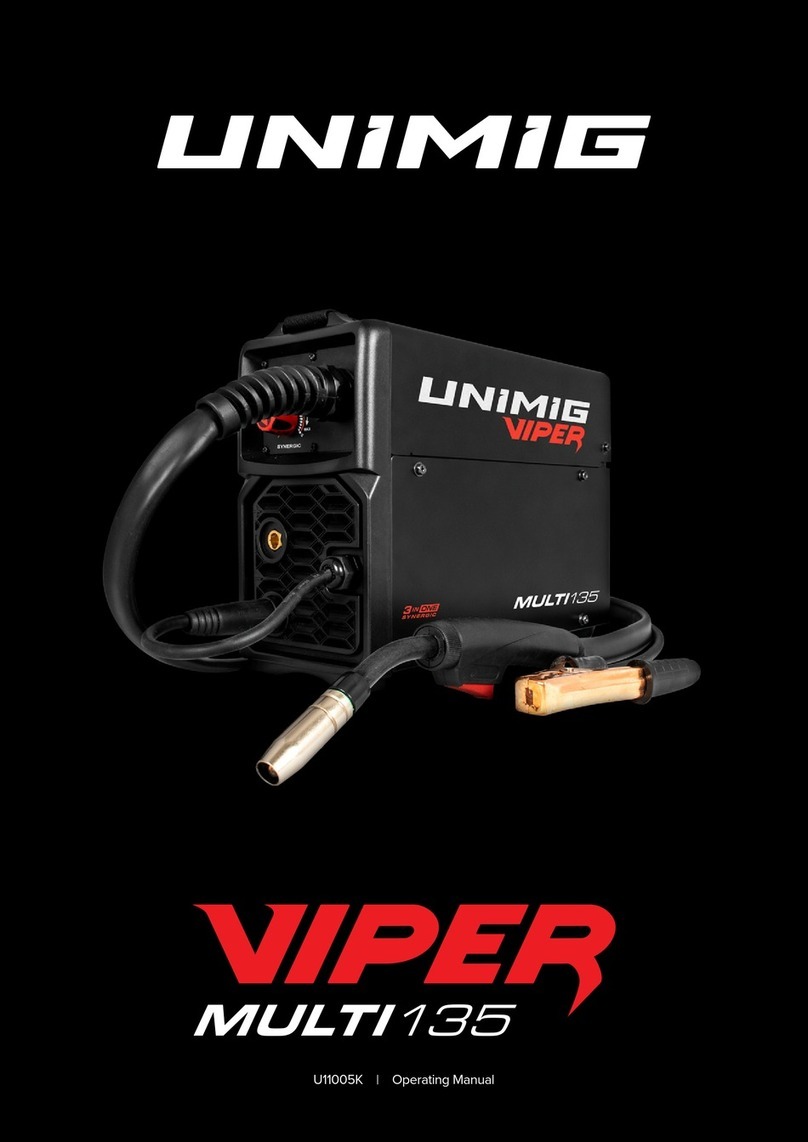
Uni-Mig
Uni-Mig VIPER MULTI 135 operating manual
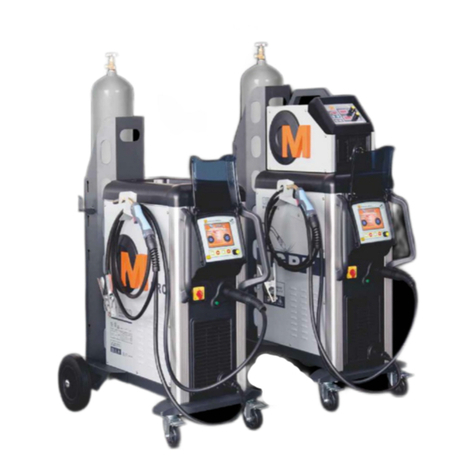
Fytech
Fytech FYMIG307 instruction manual
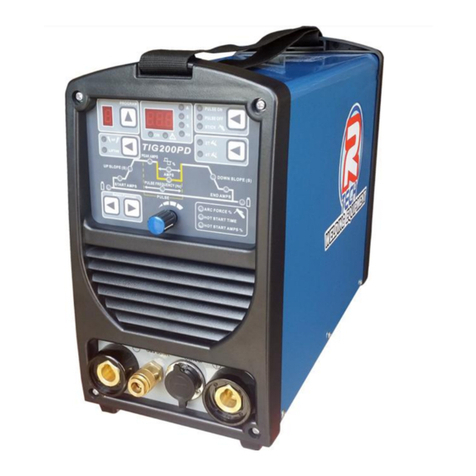
Rtech
Rtech TIG200PD-DV Operation instructions
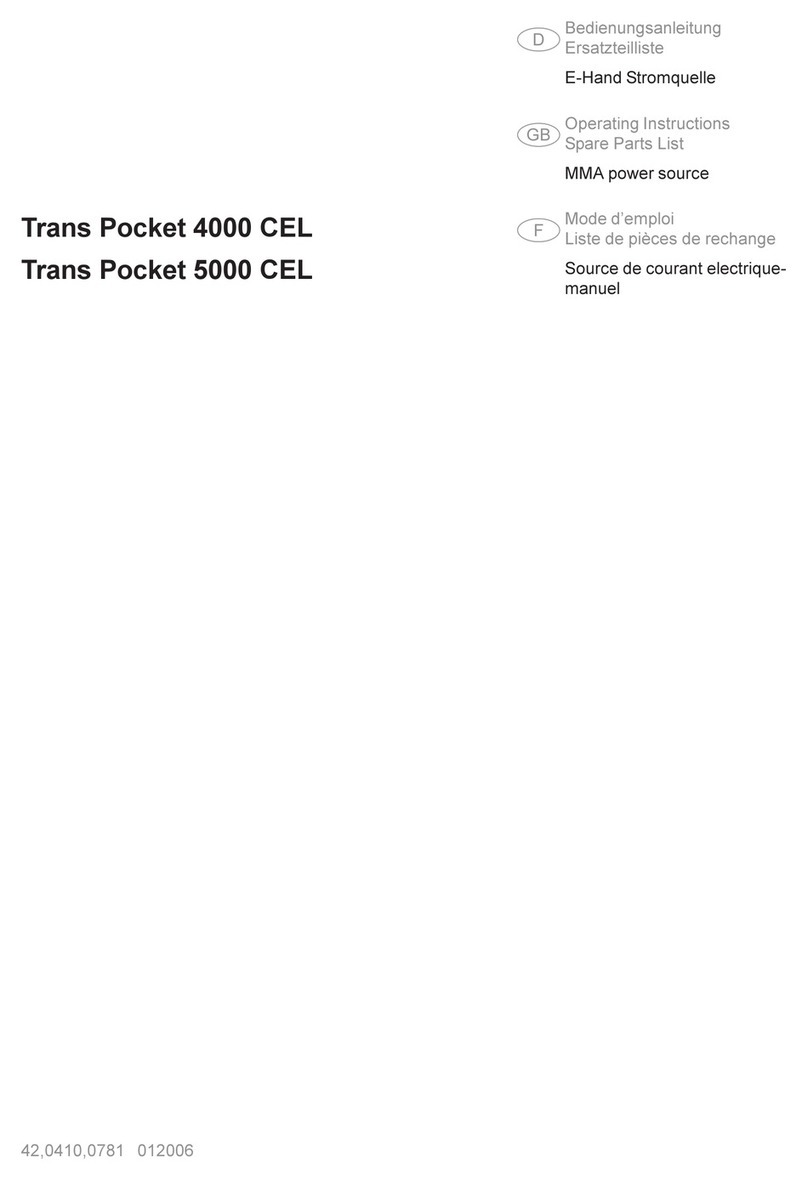
FRONIUS
FRONIUS Trans Pocket 4000 CEL Operating instructions/spare parts list
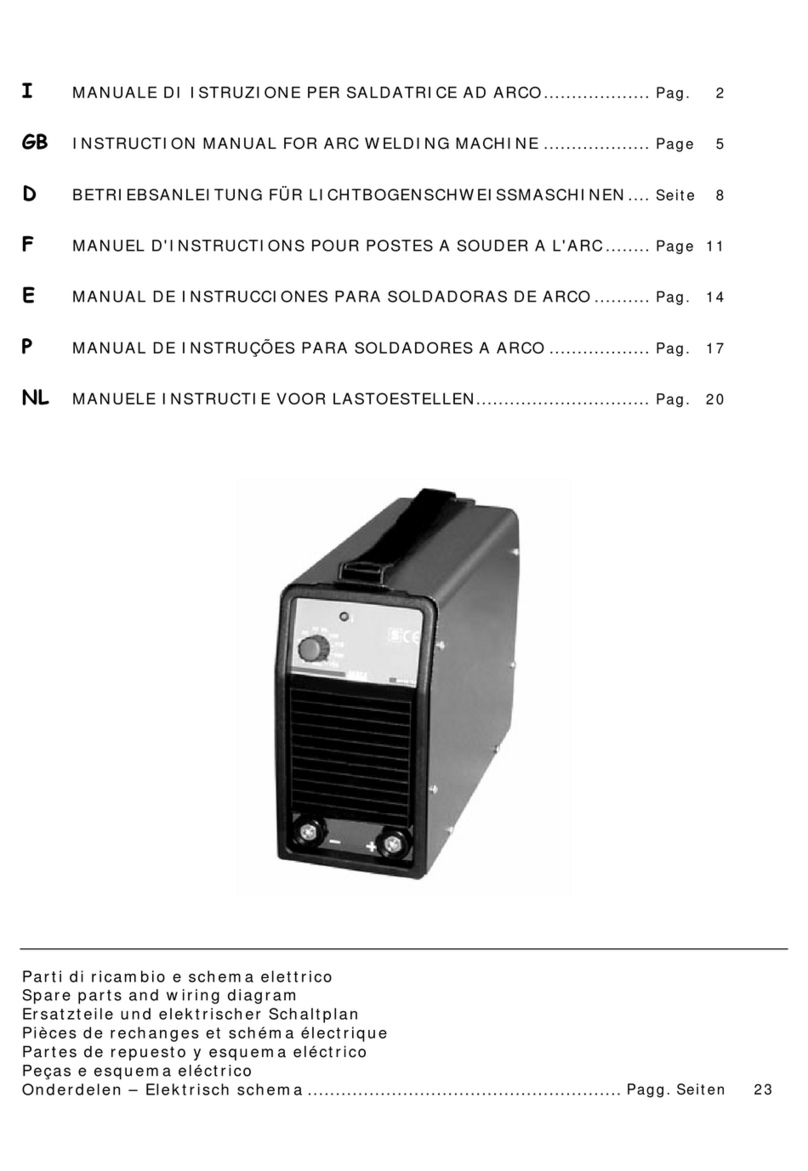
Elettro C.F.
Elettro C.F. MMA 135 instruction manual
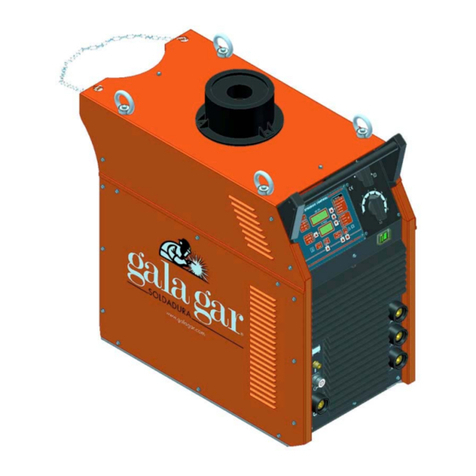
gala gar
gala gar GALA SYNERGIC 5000 Technical instruction manual
